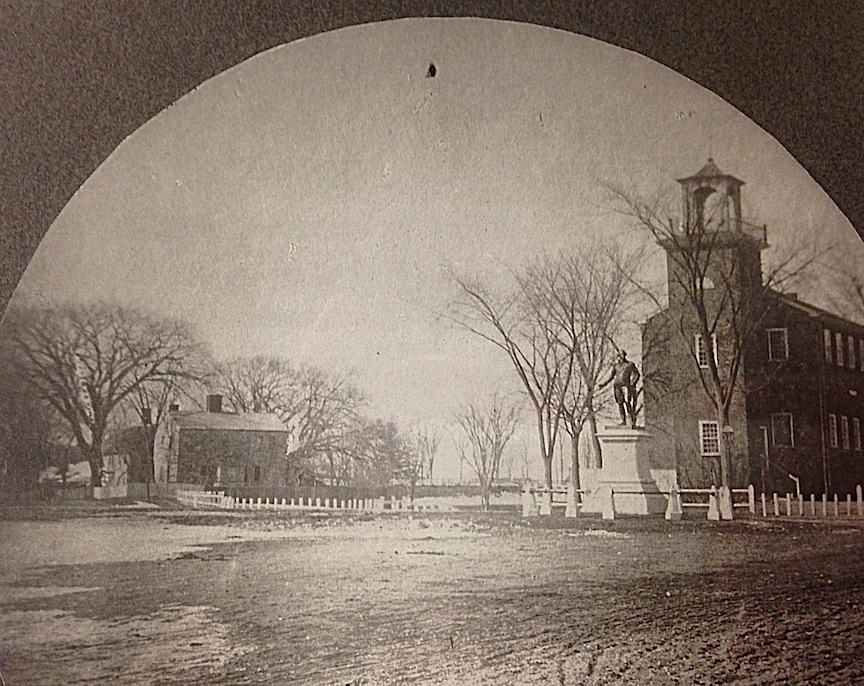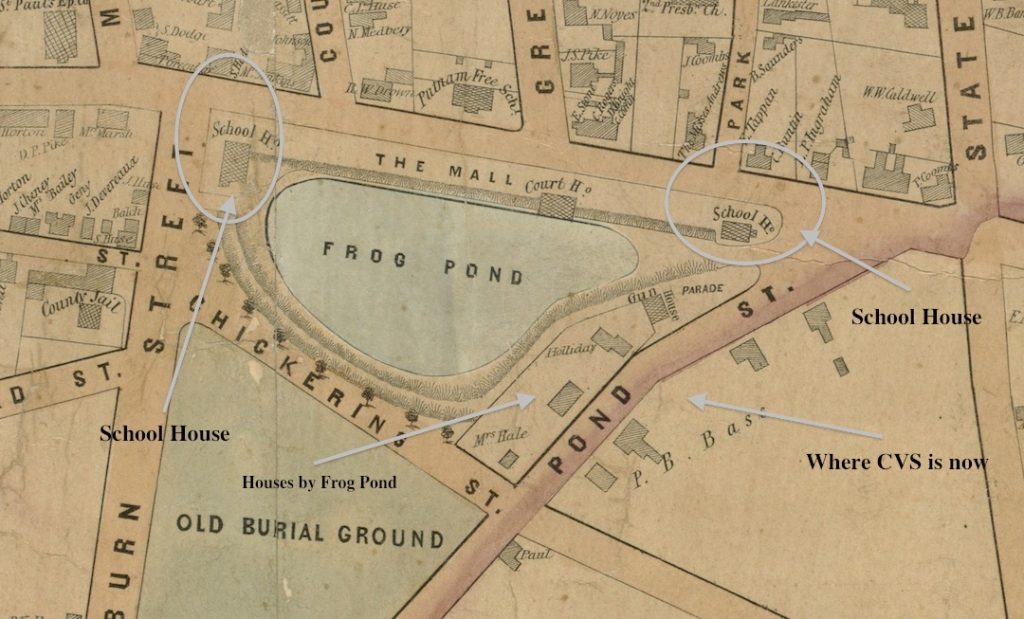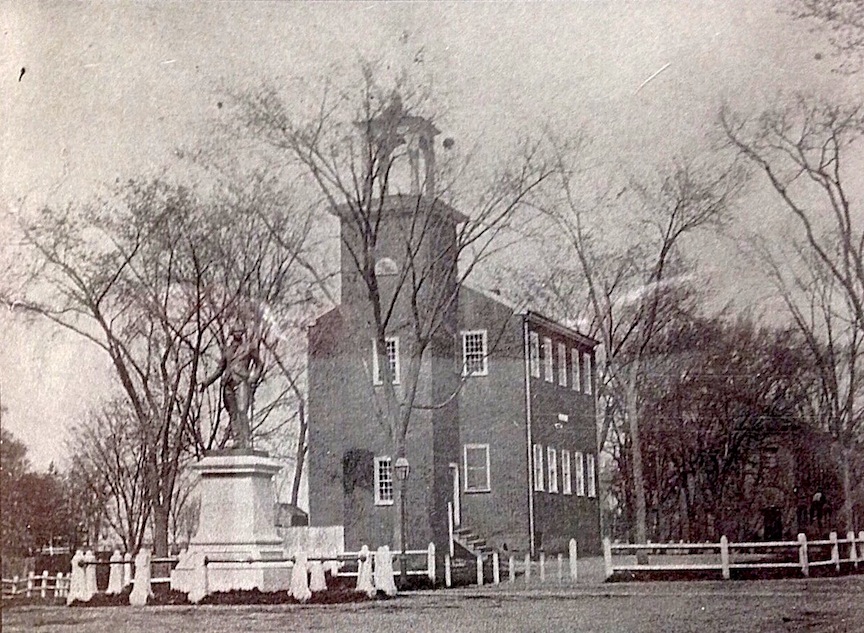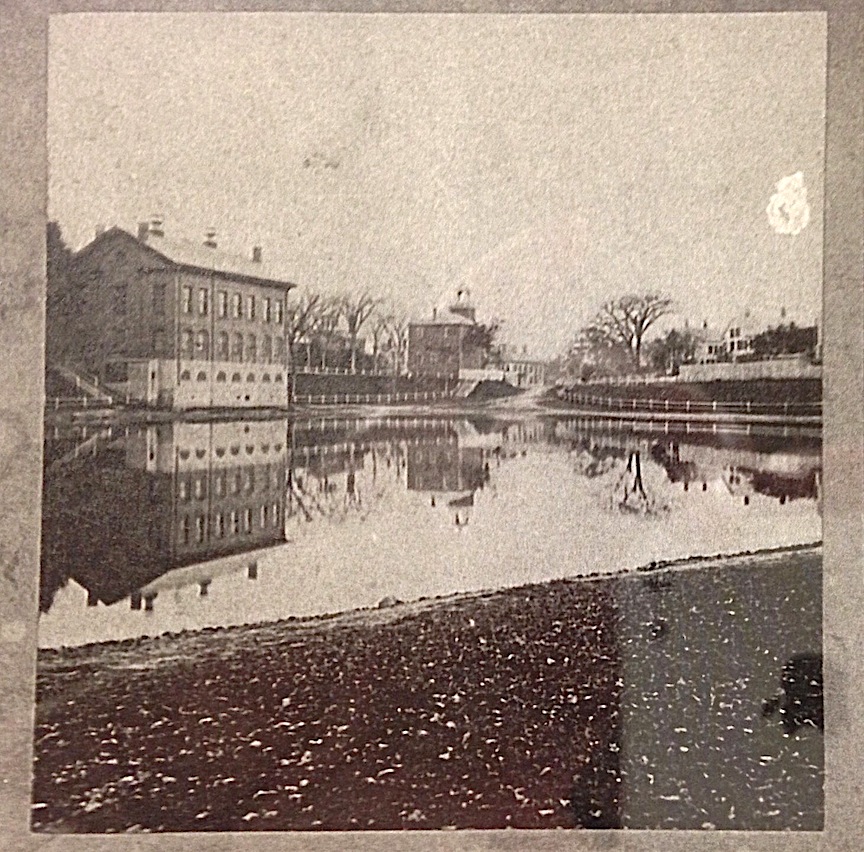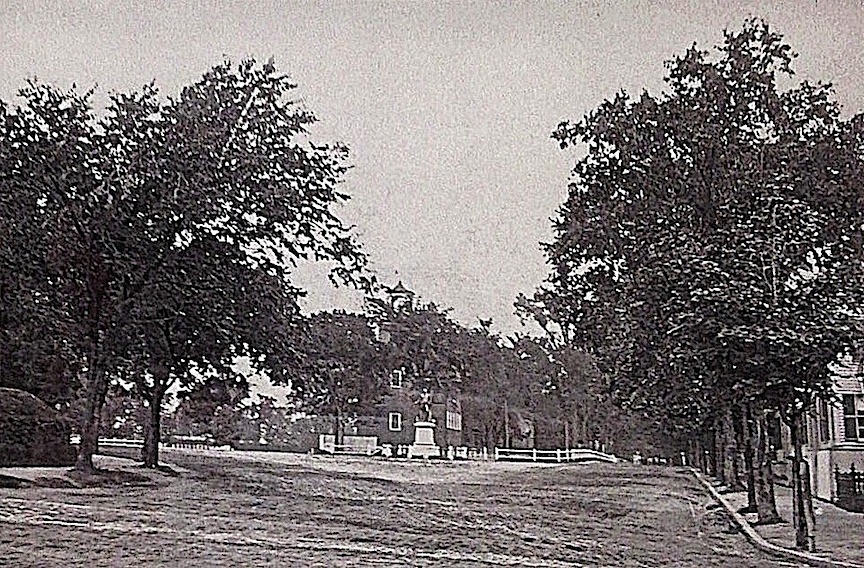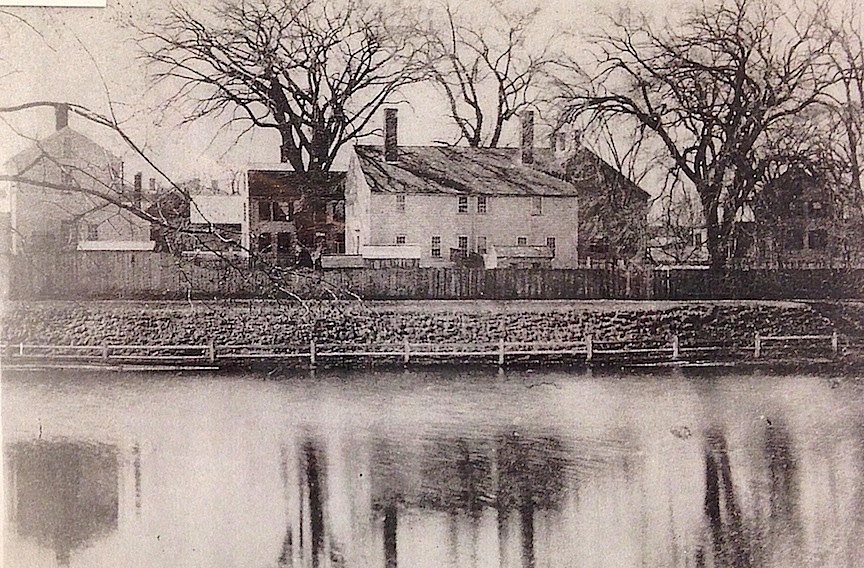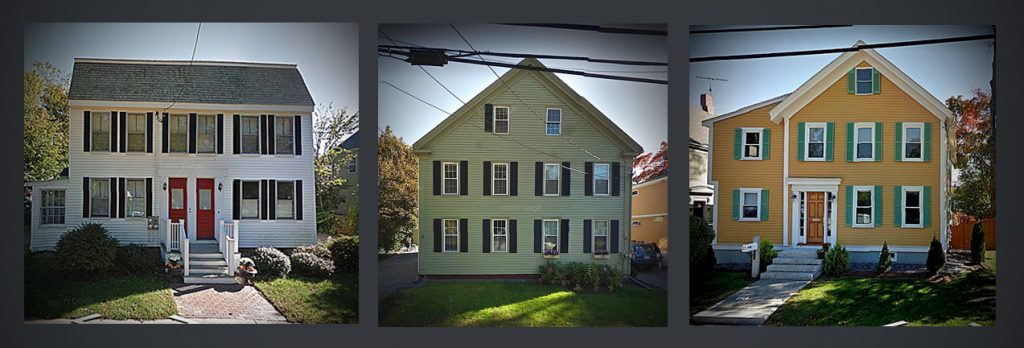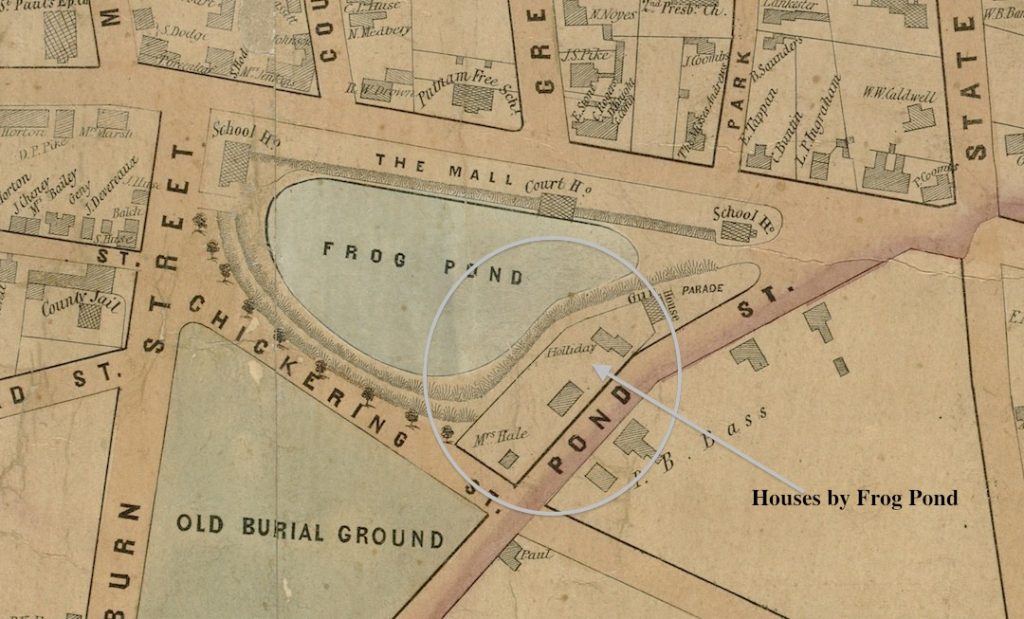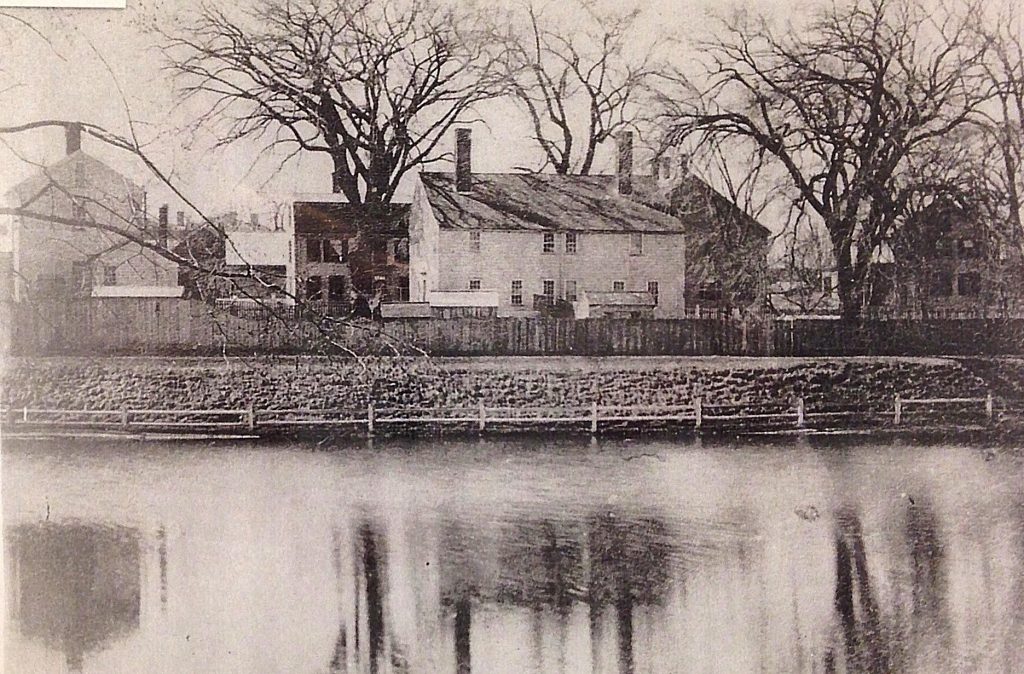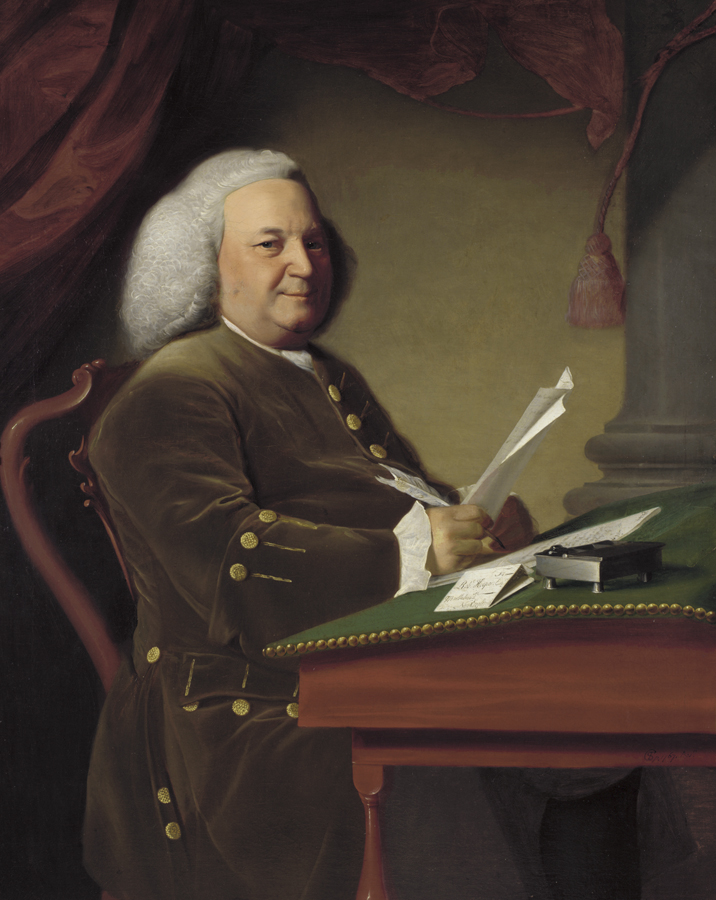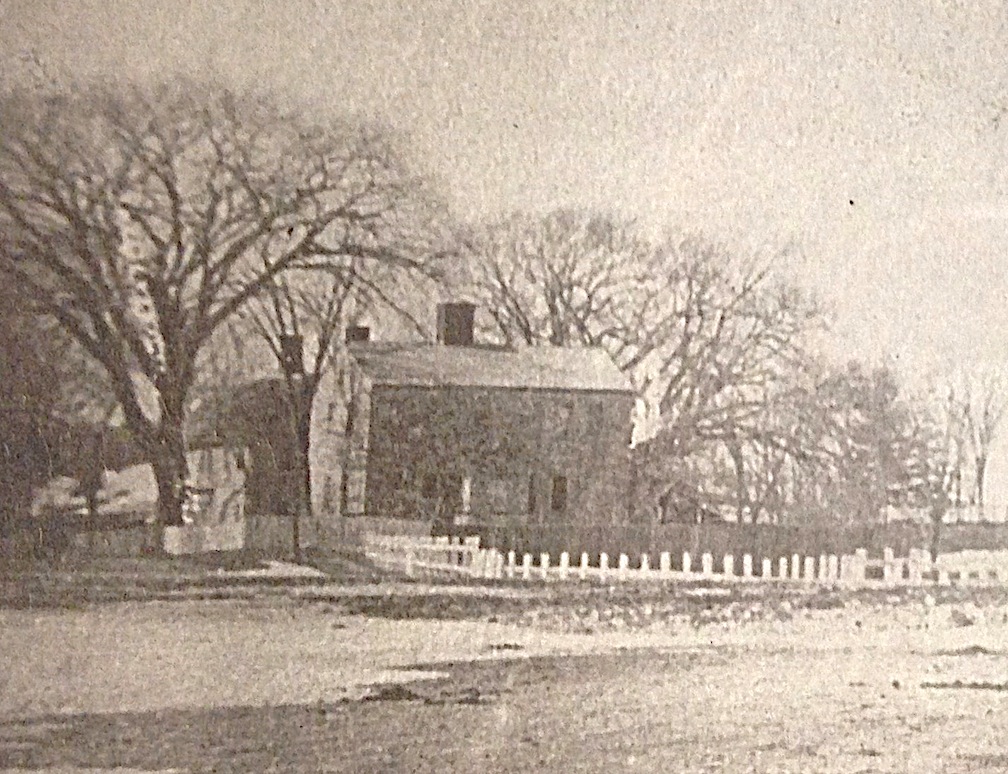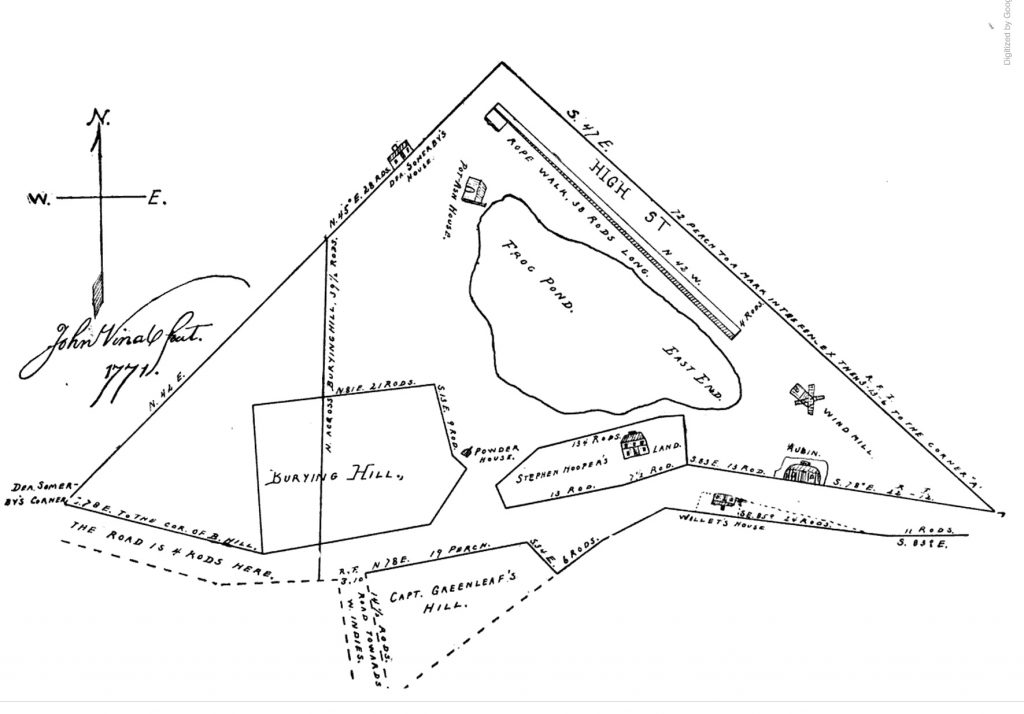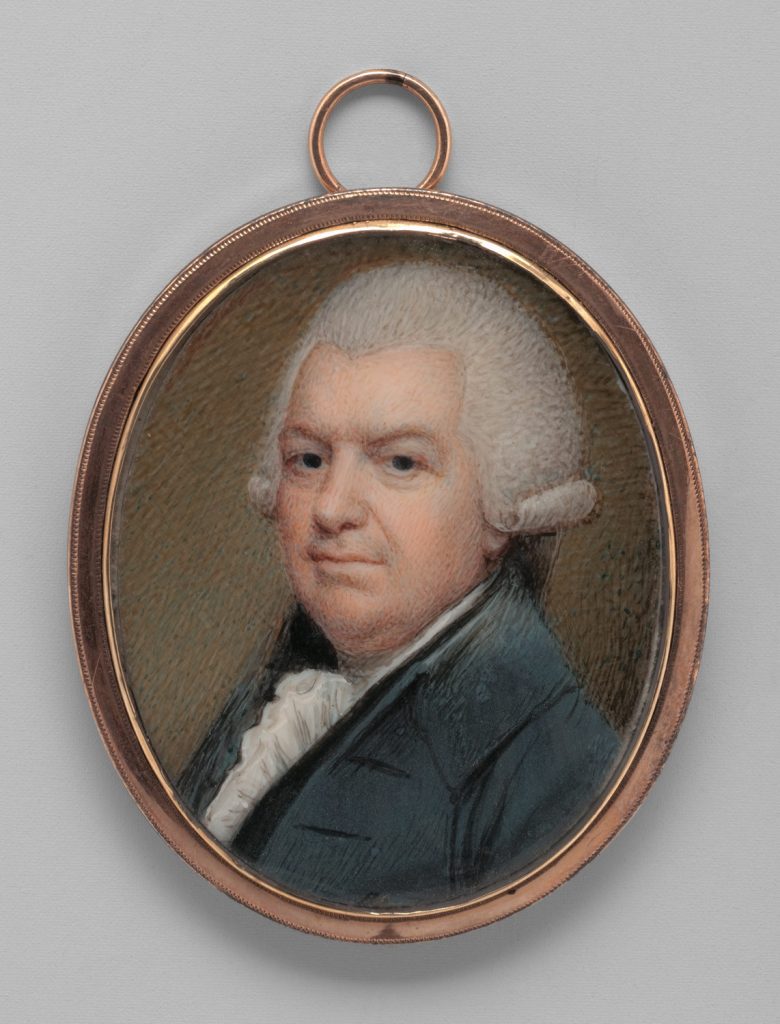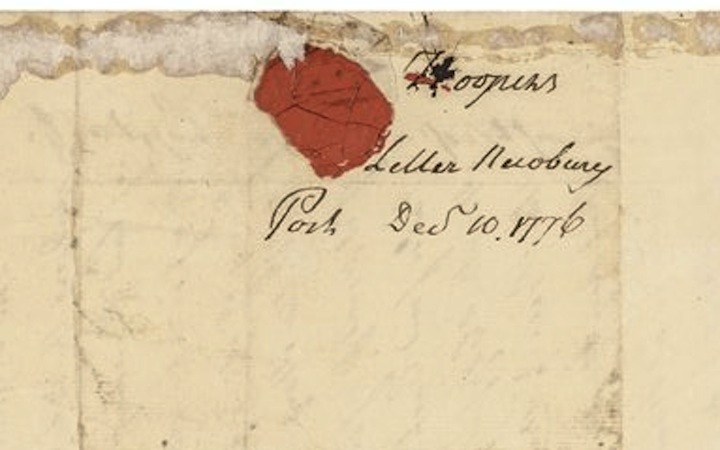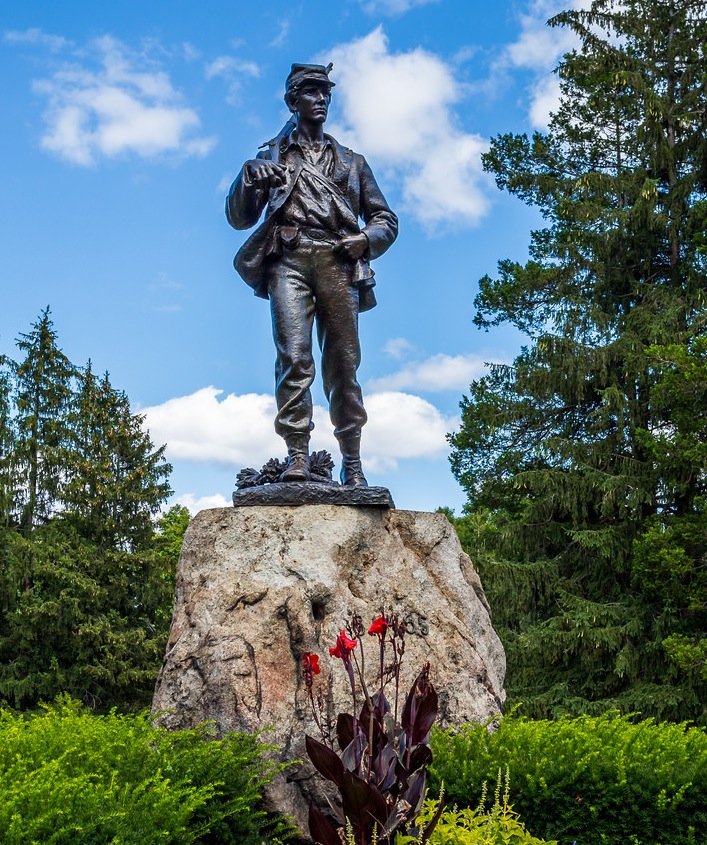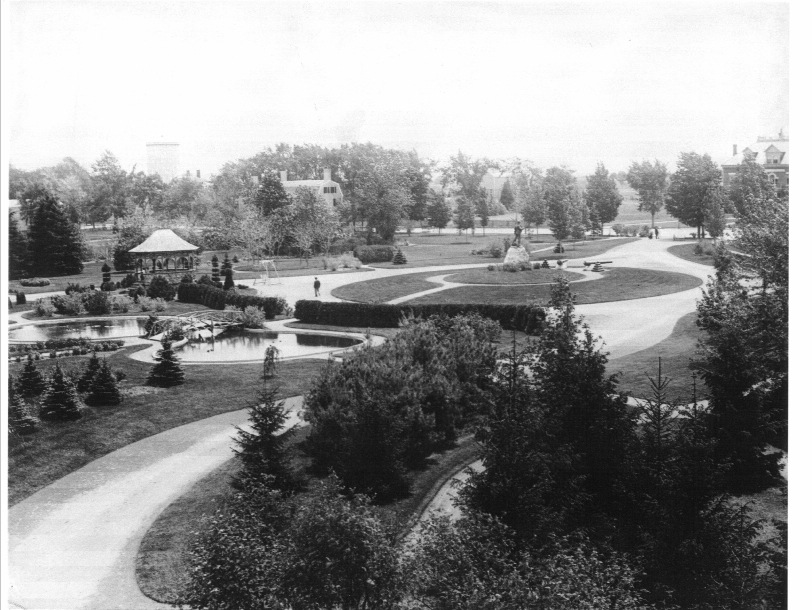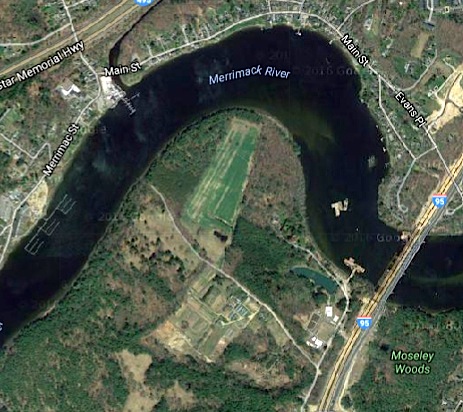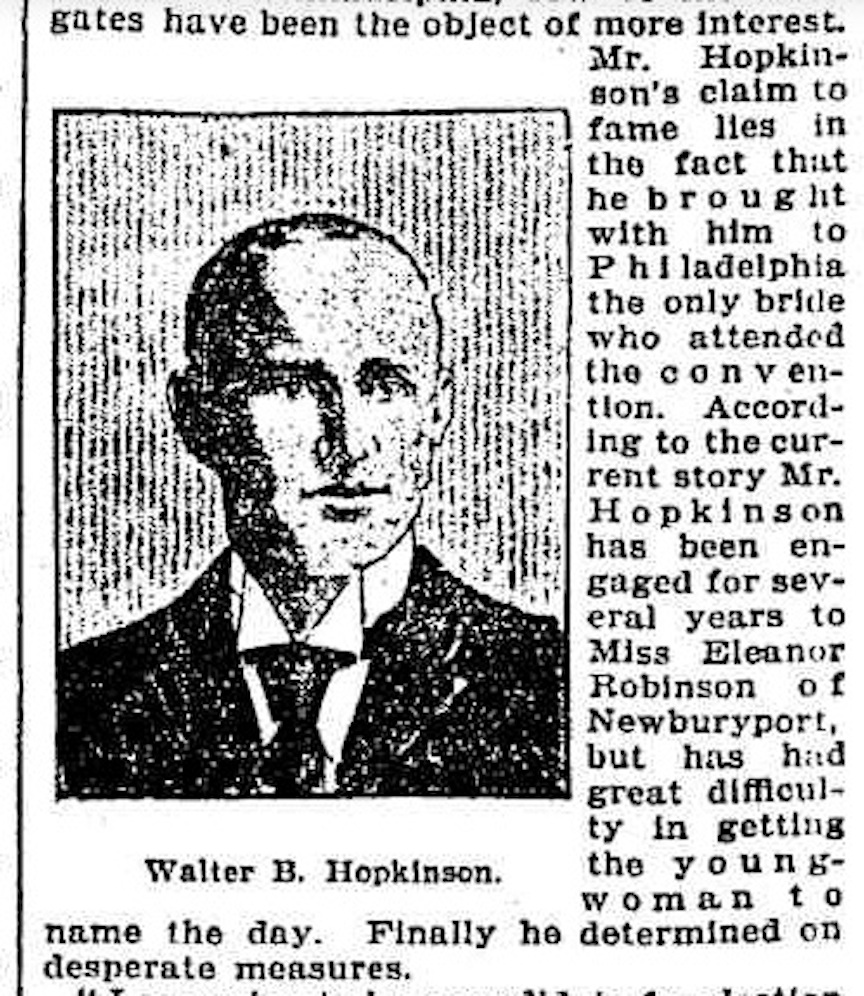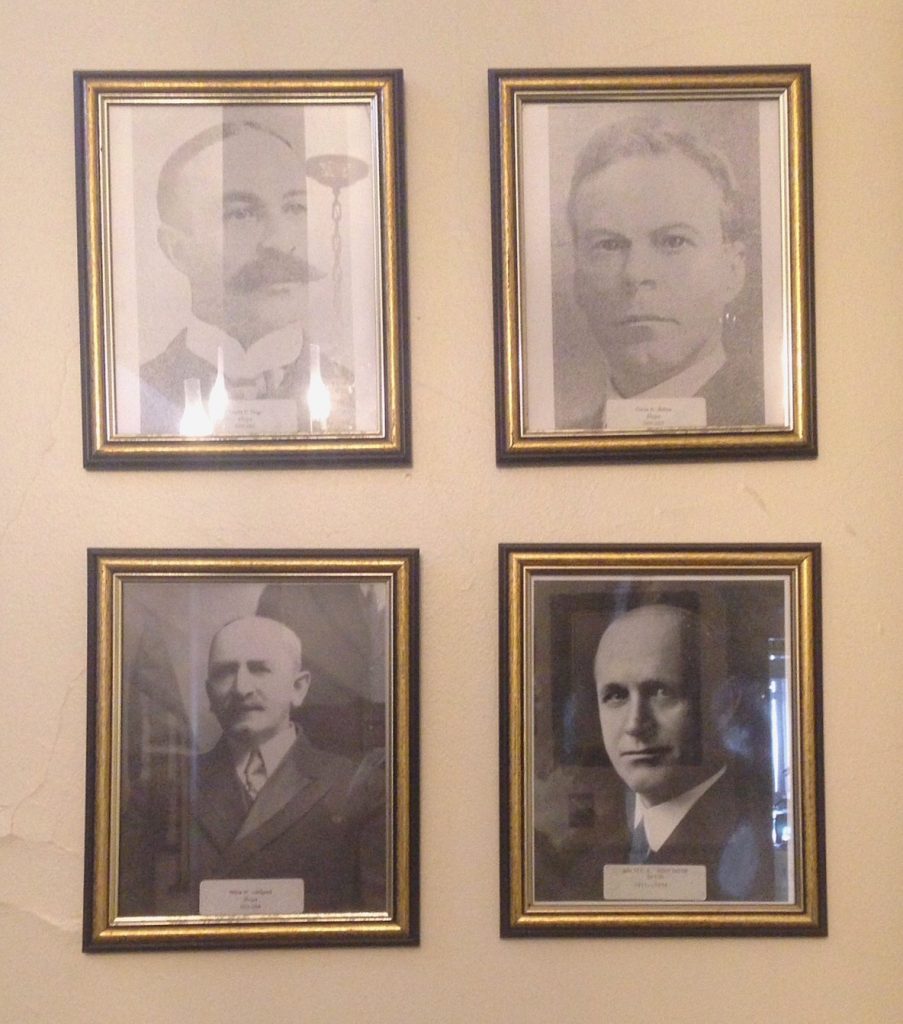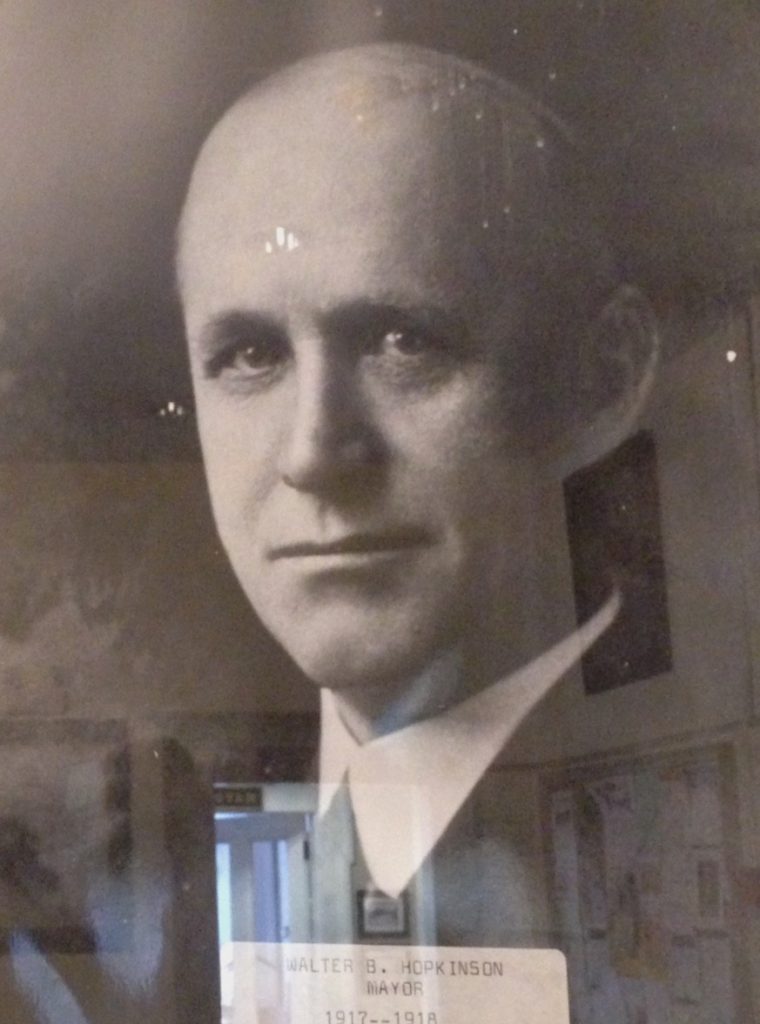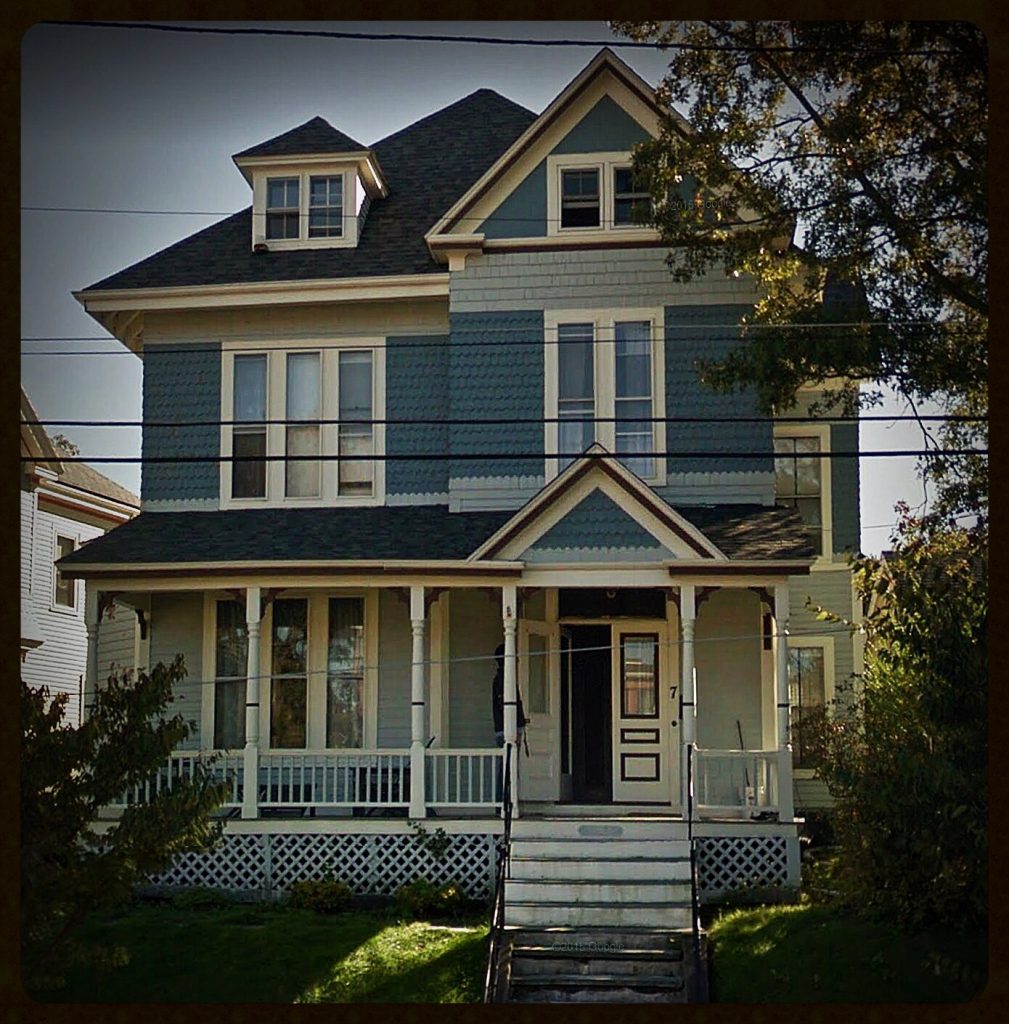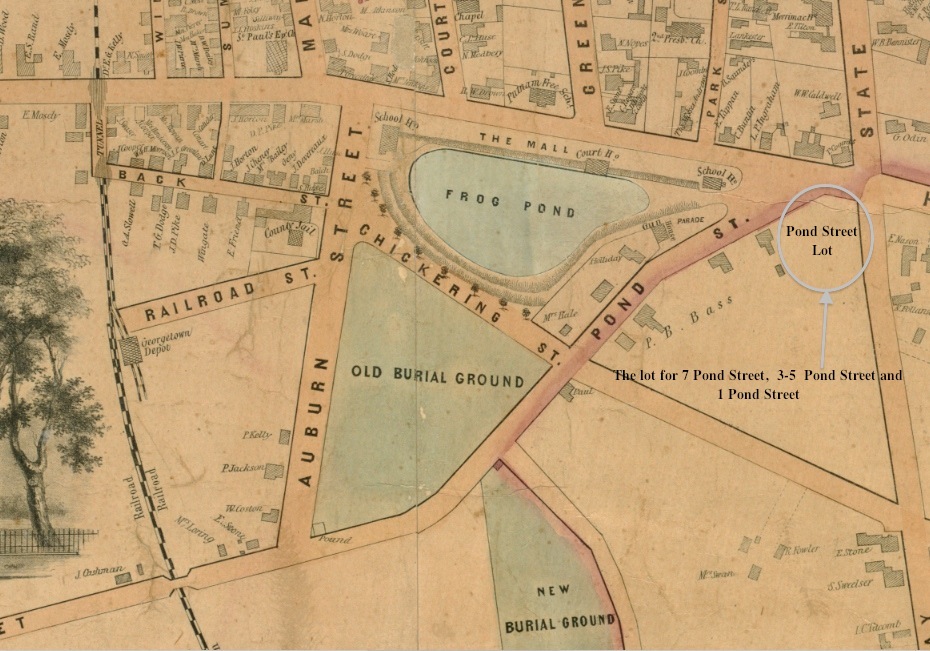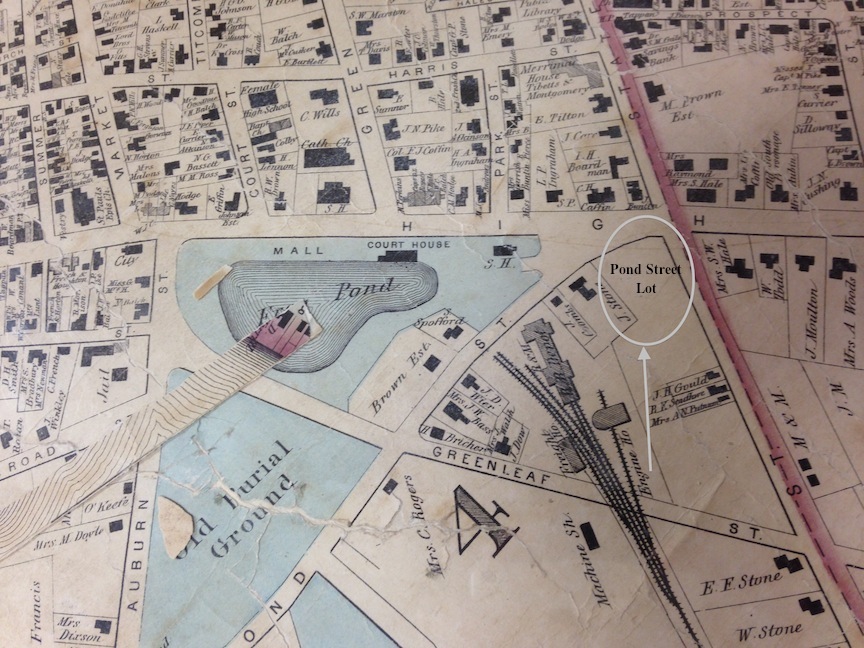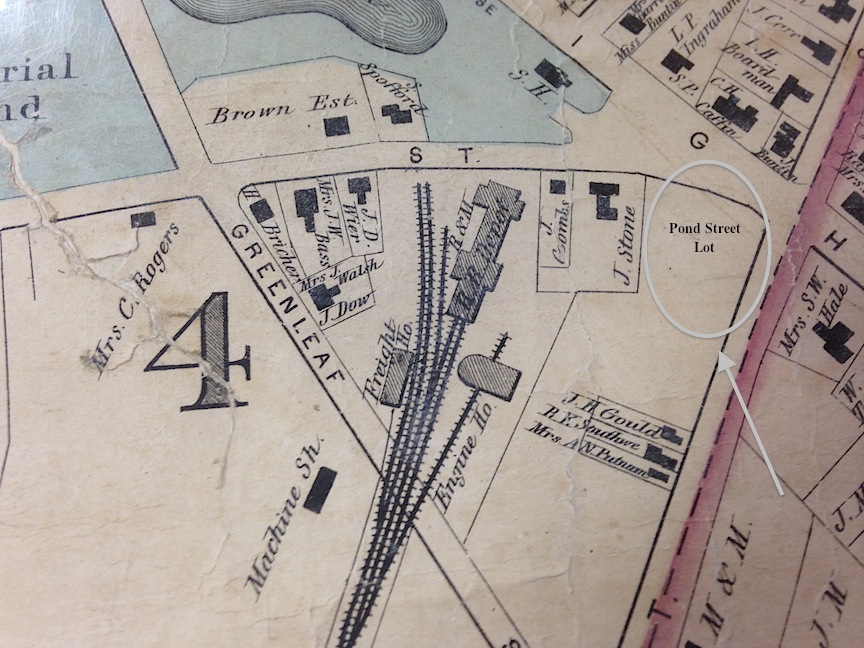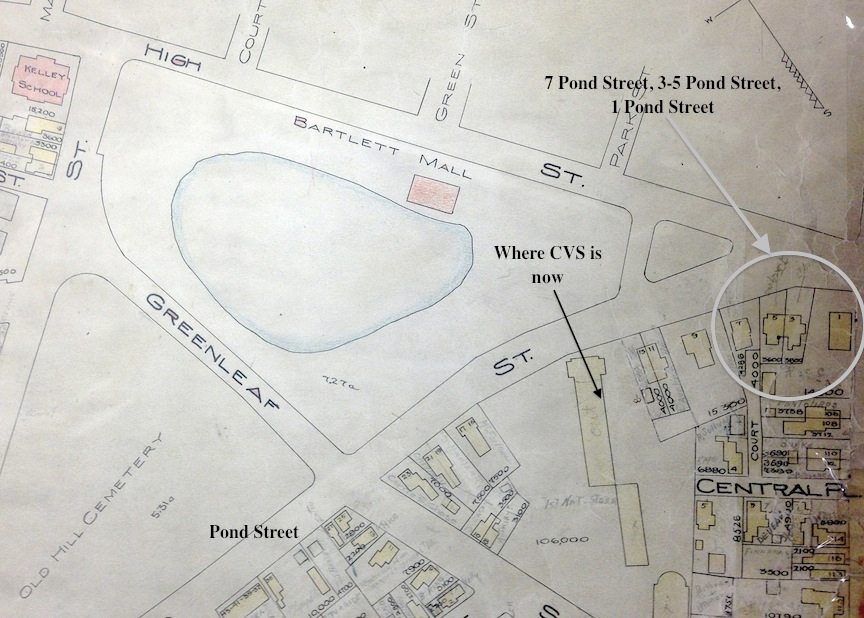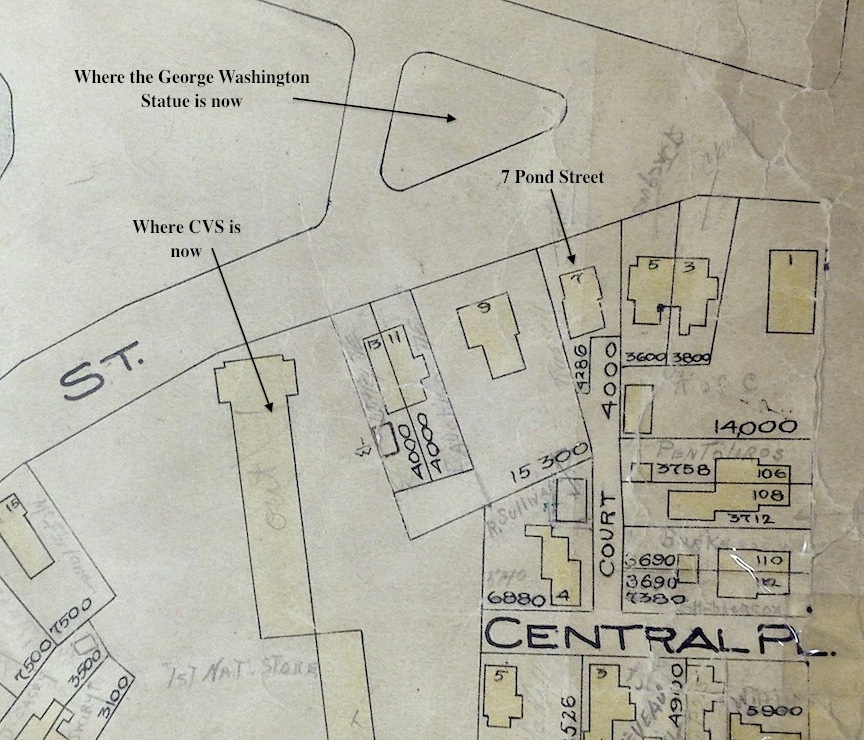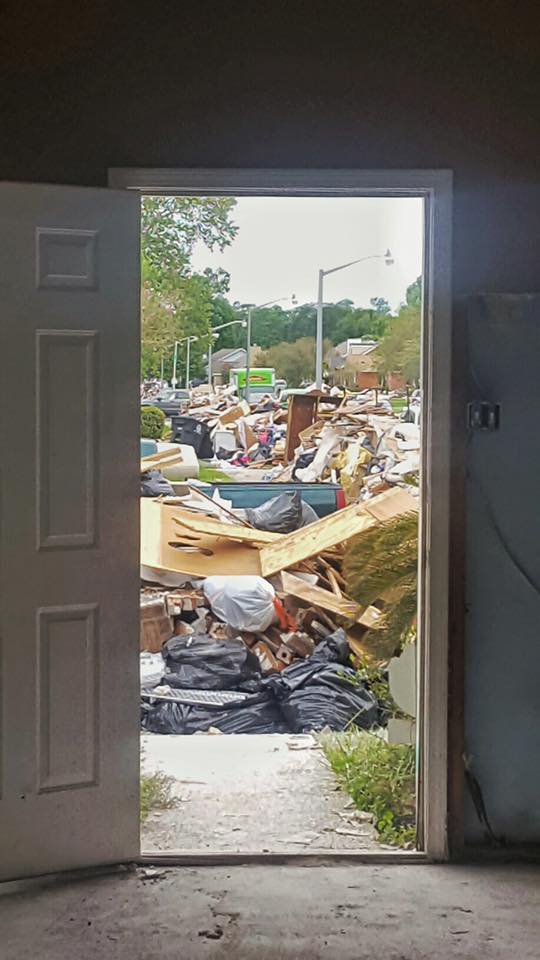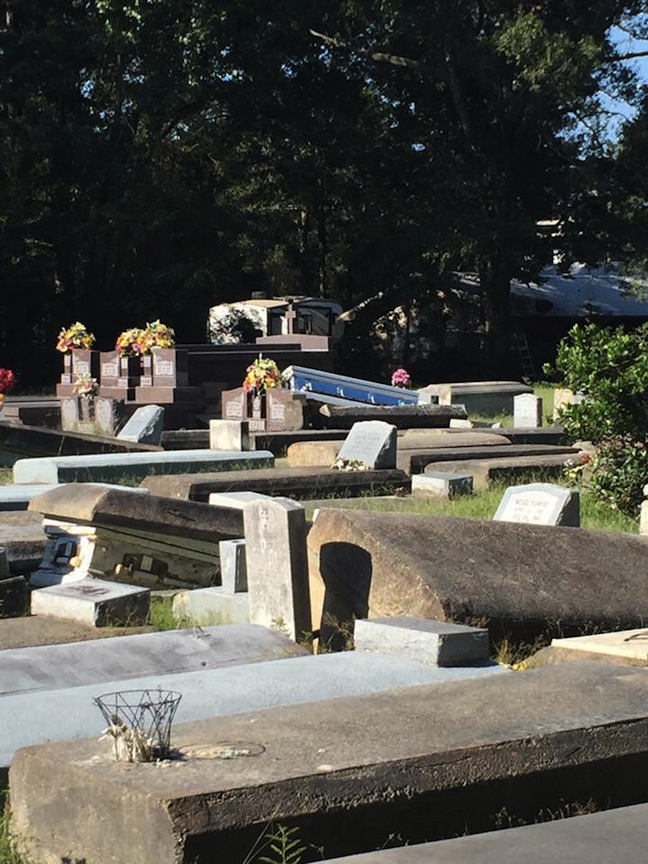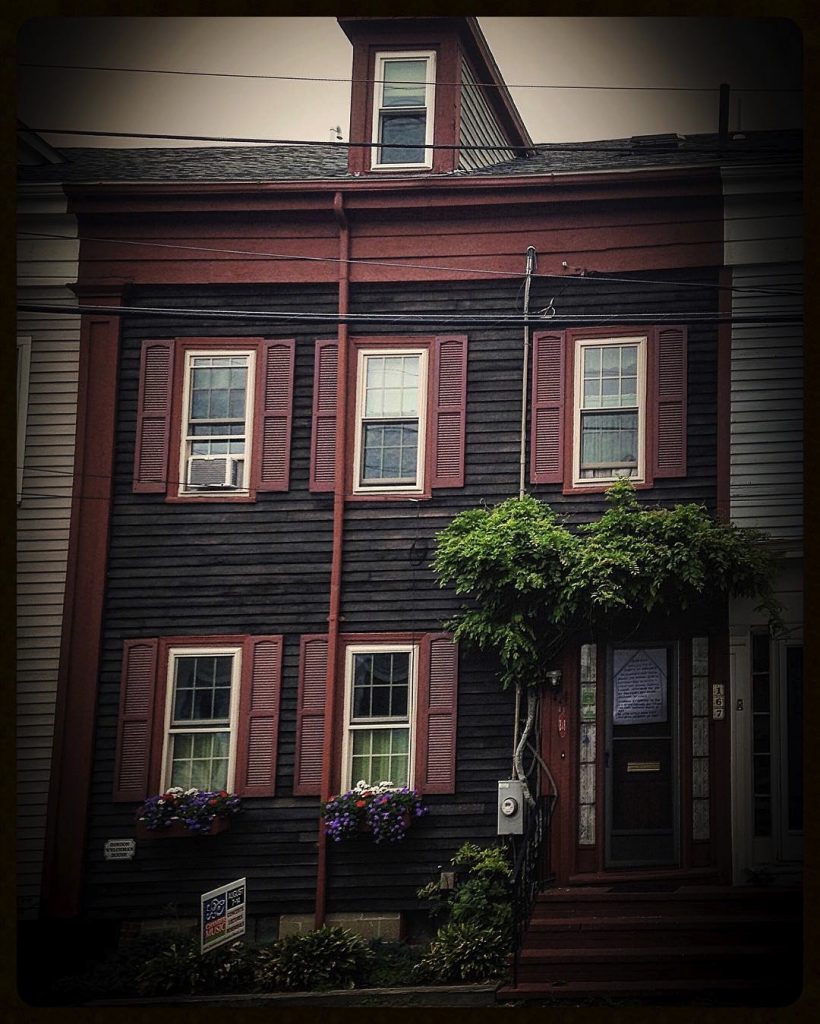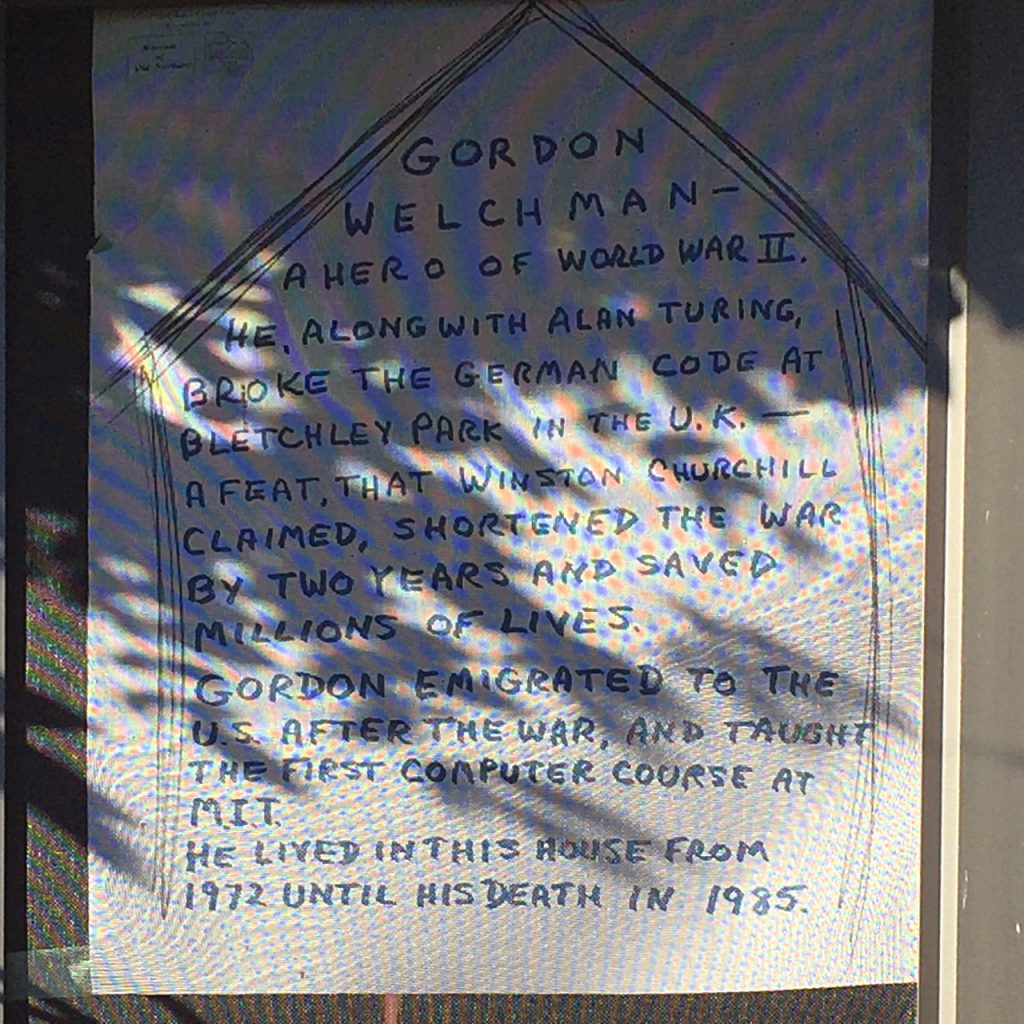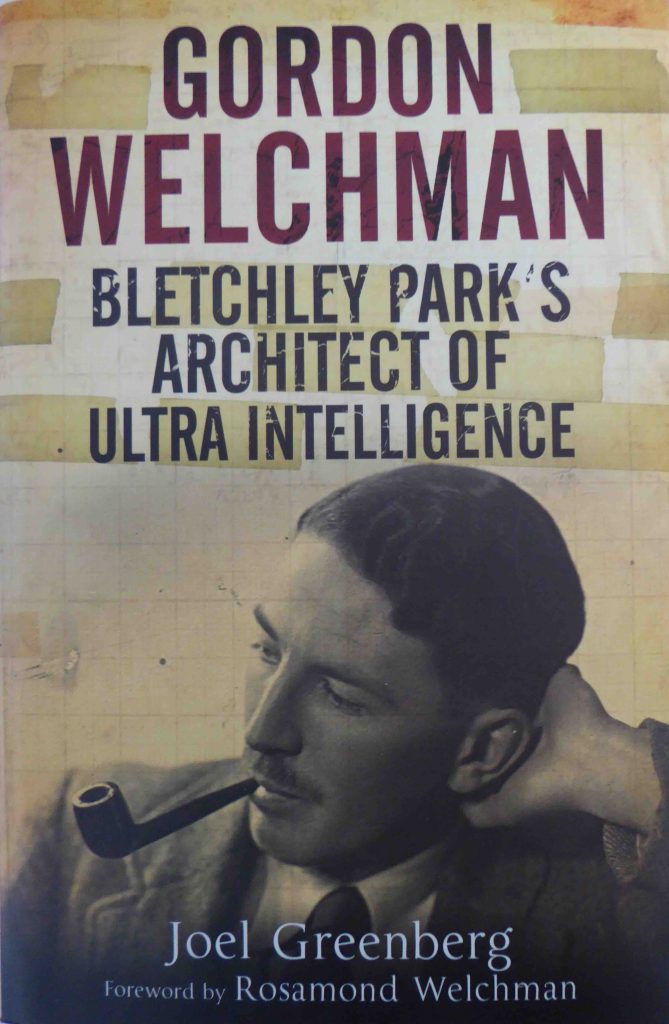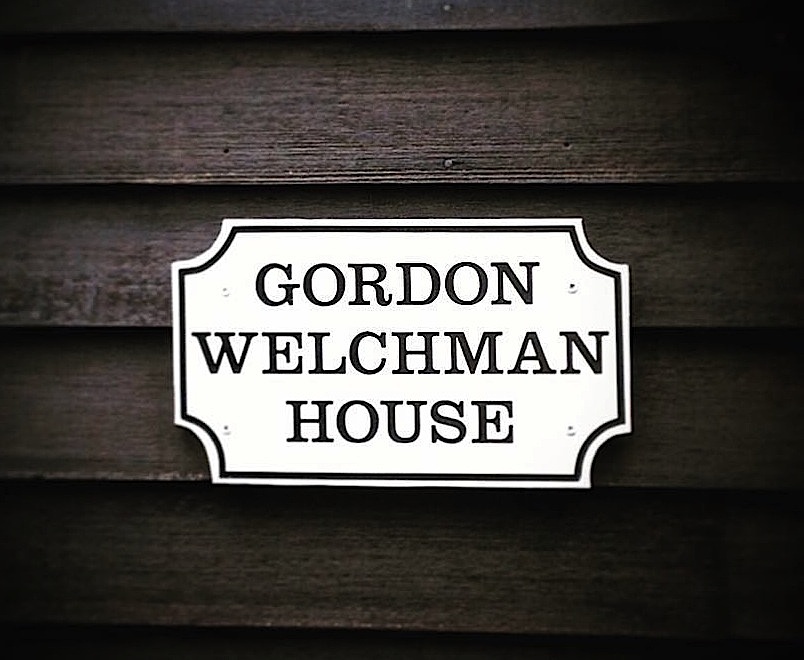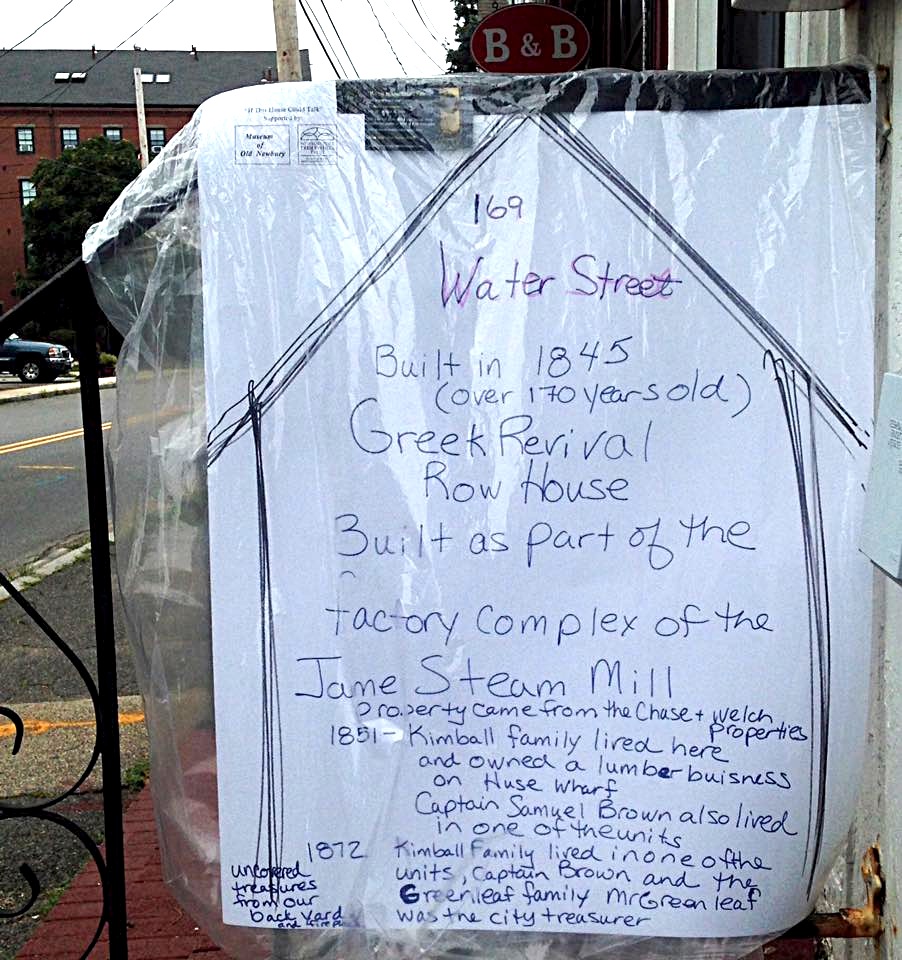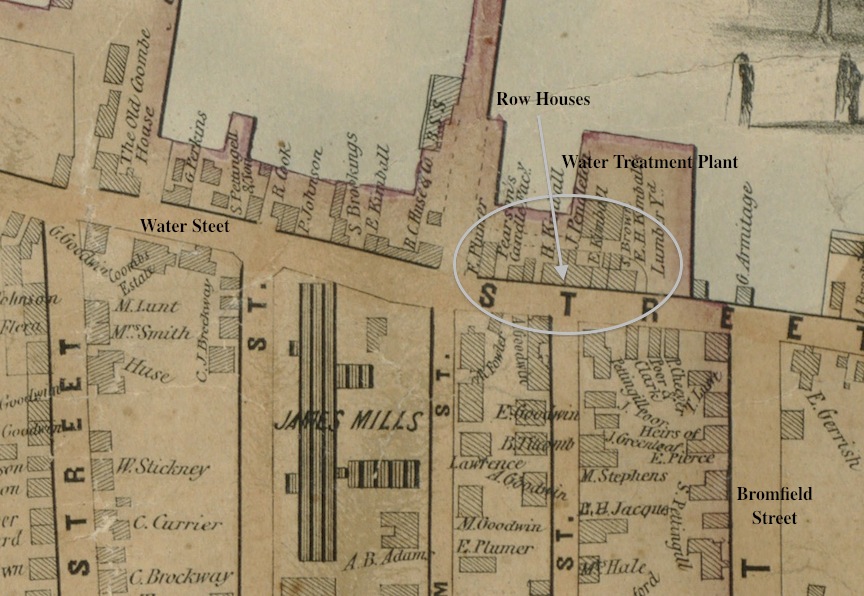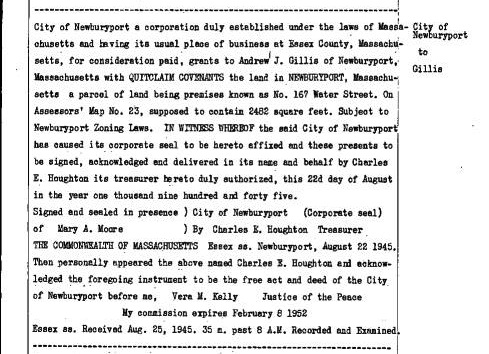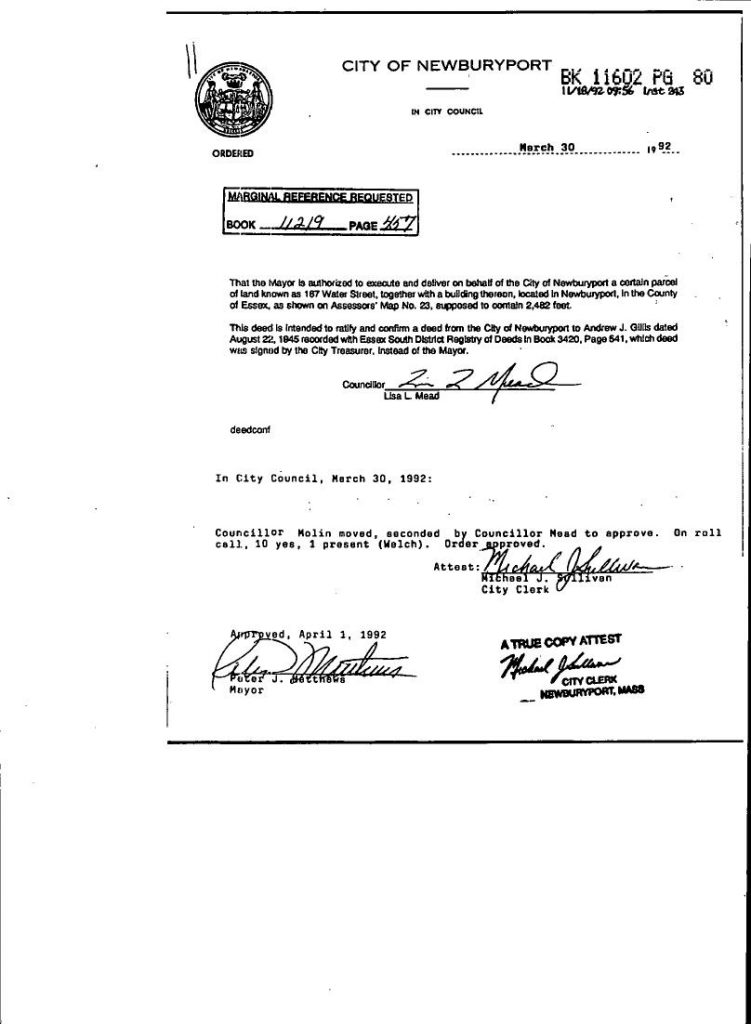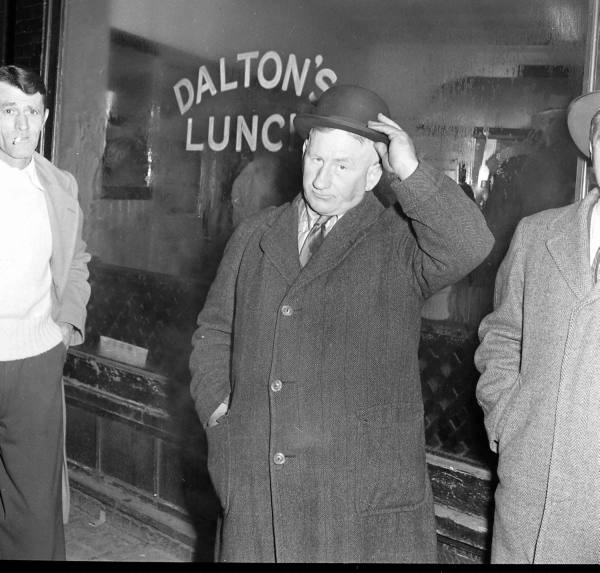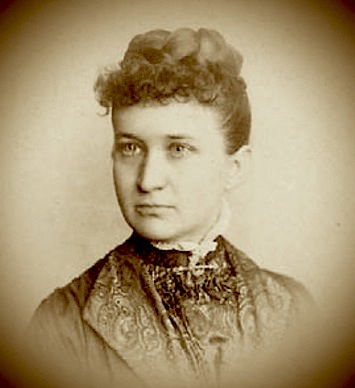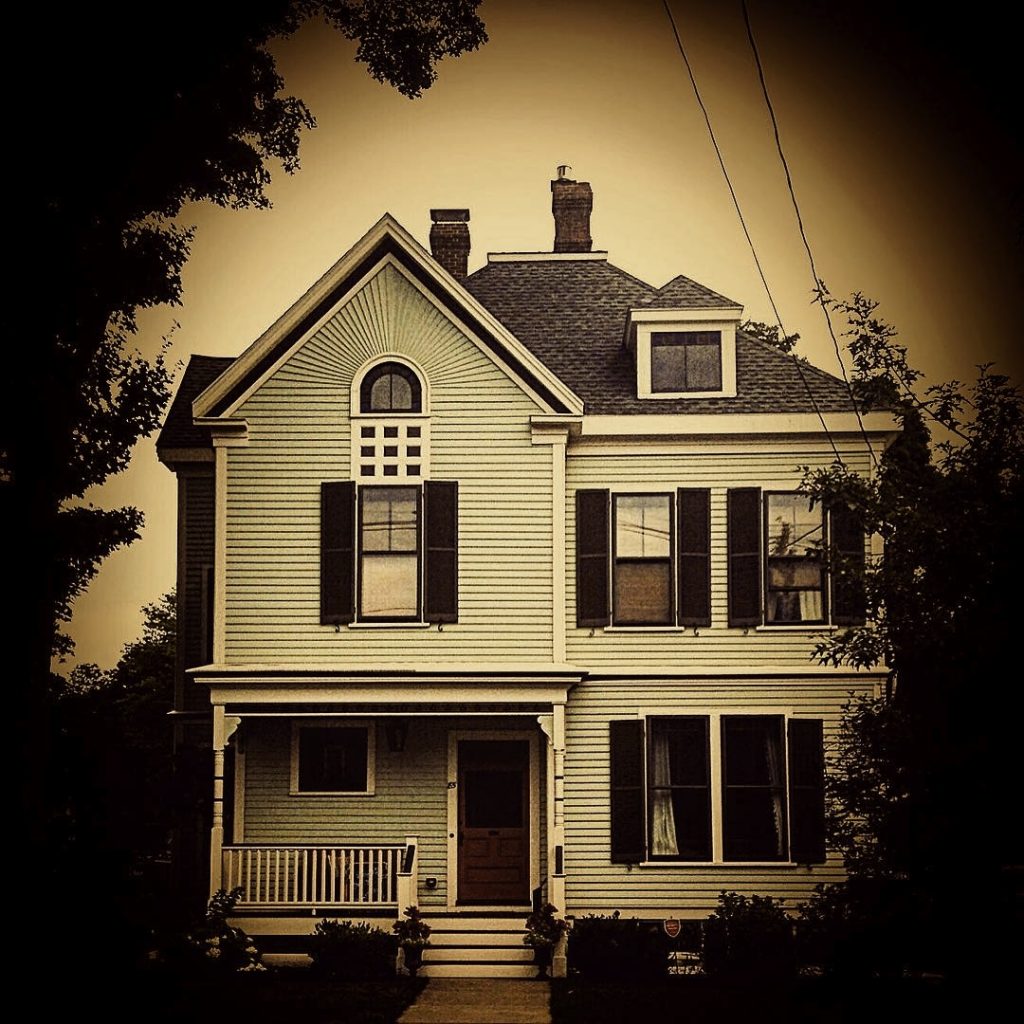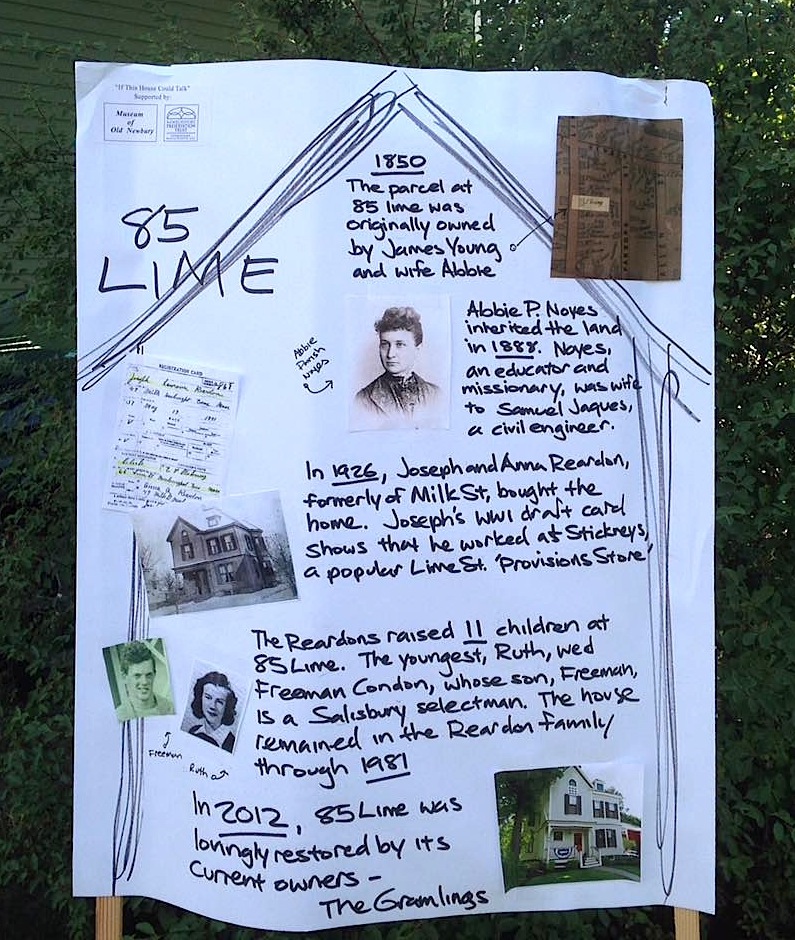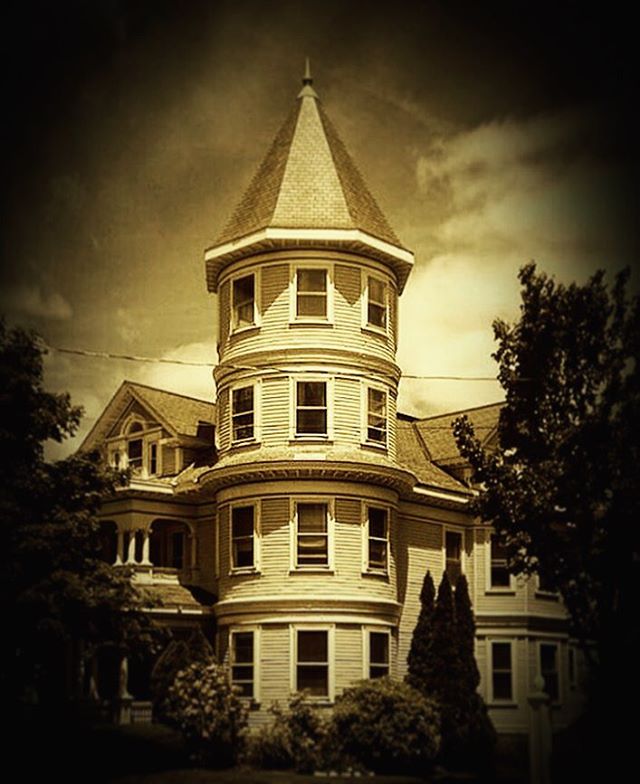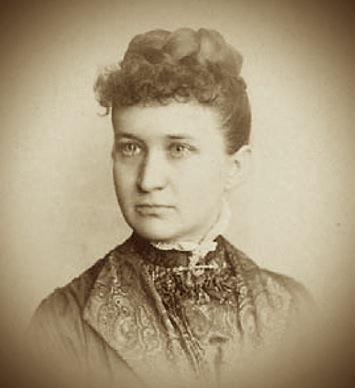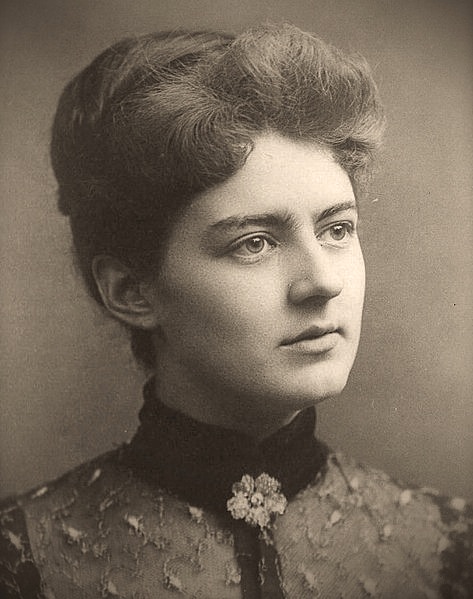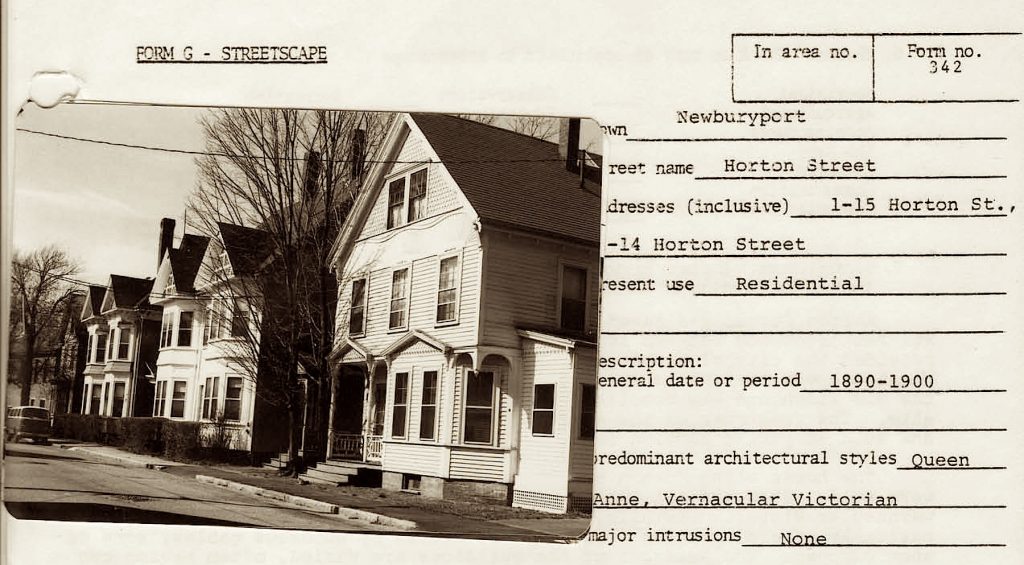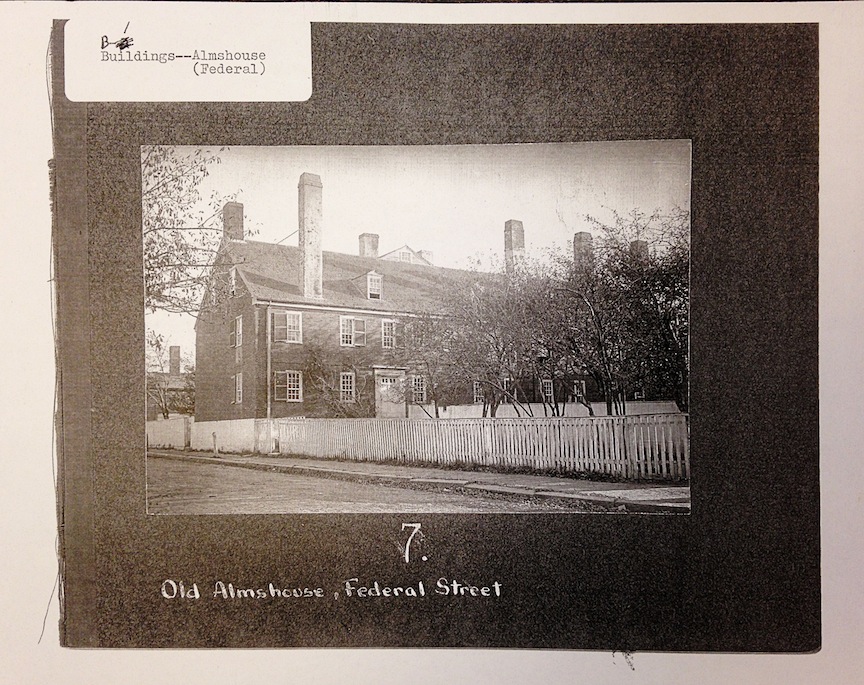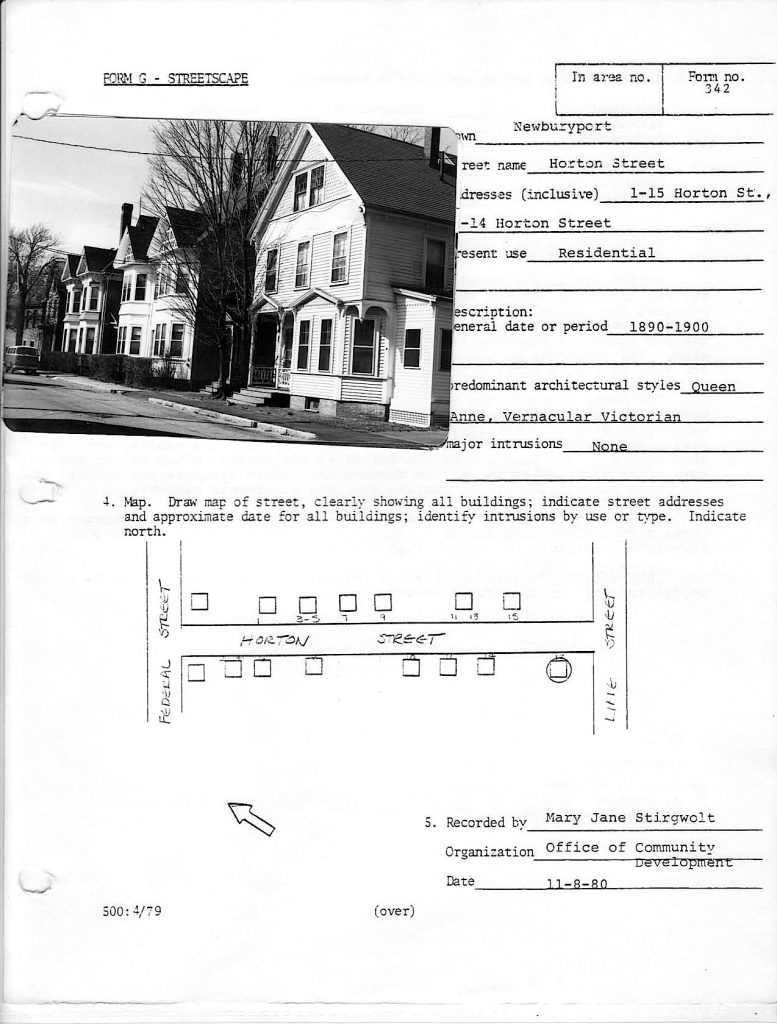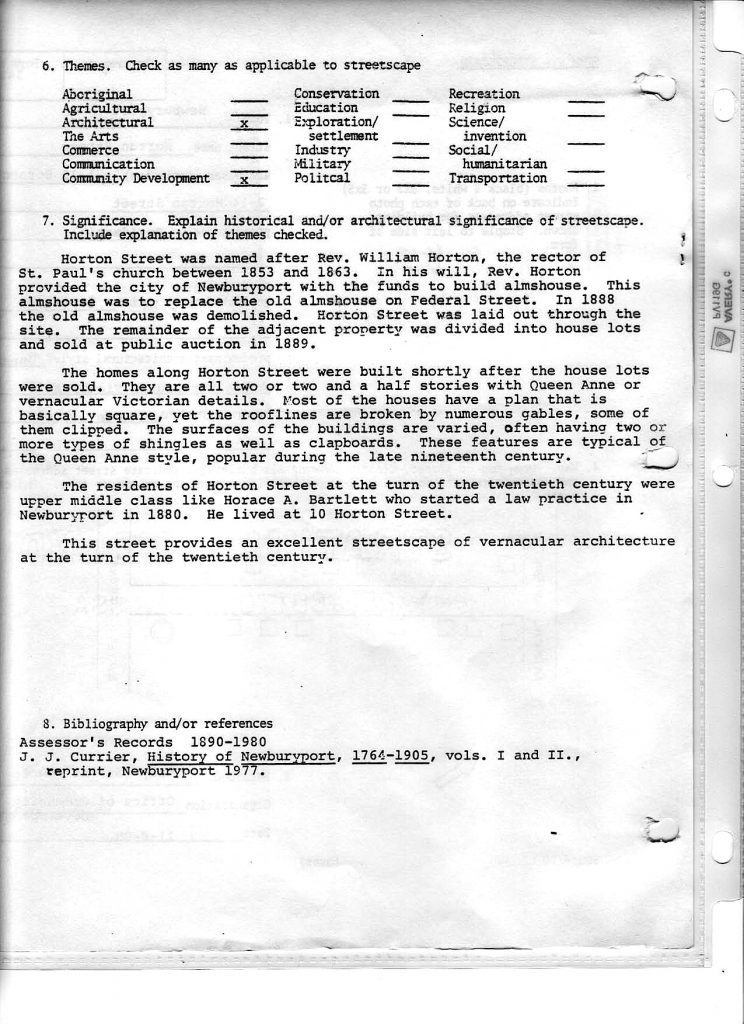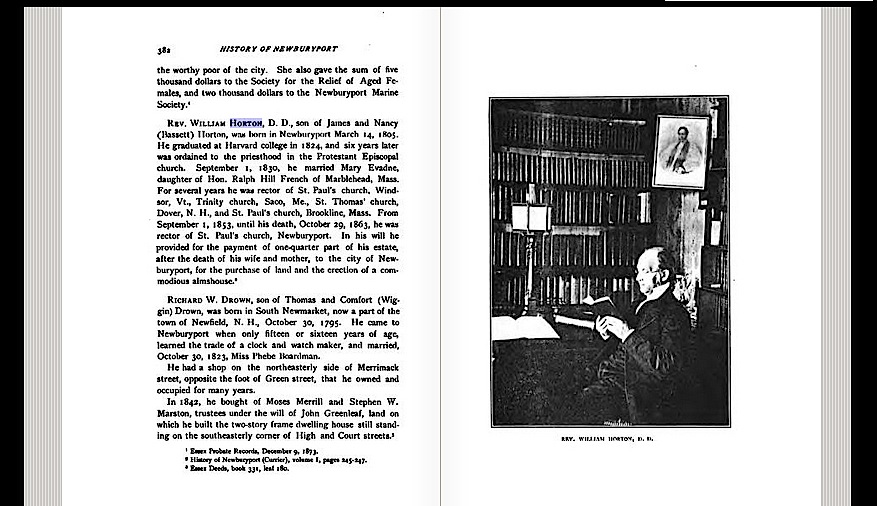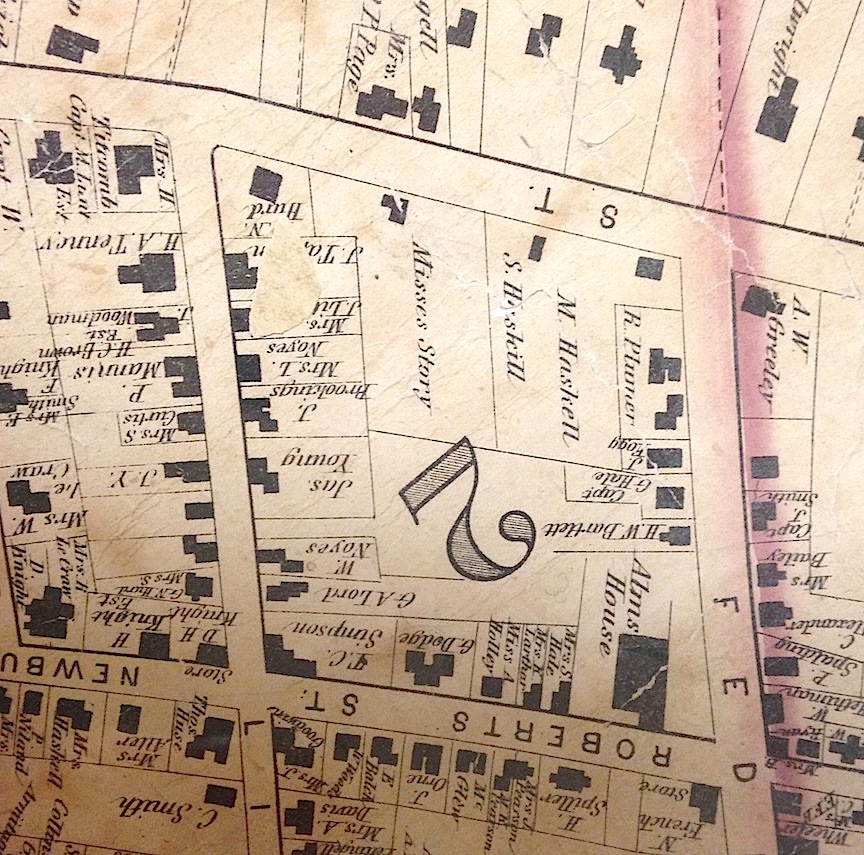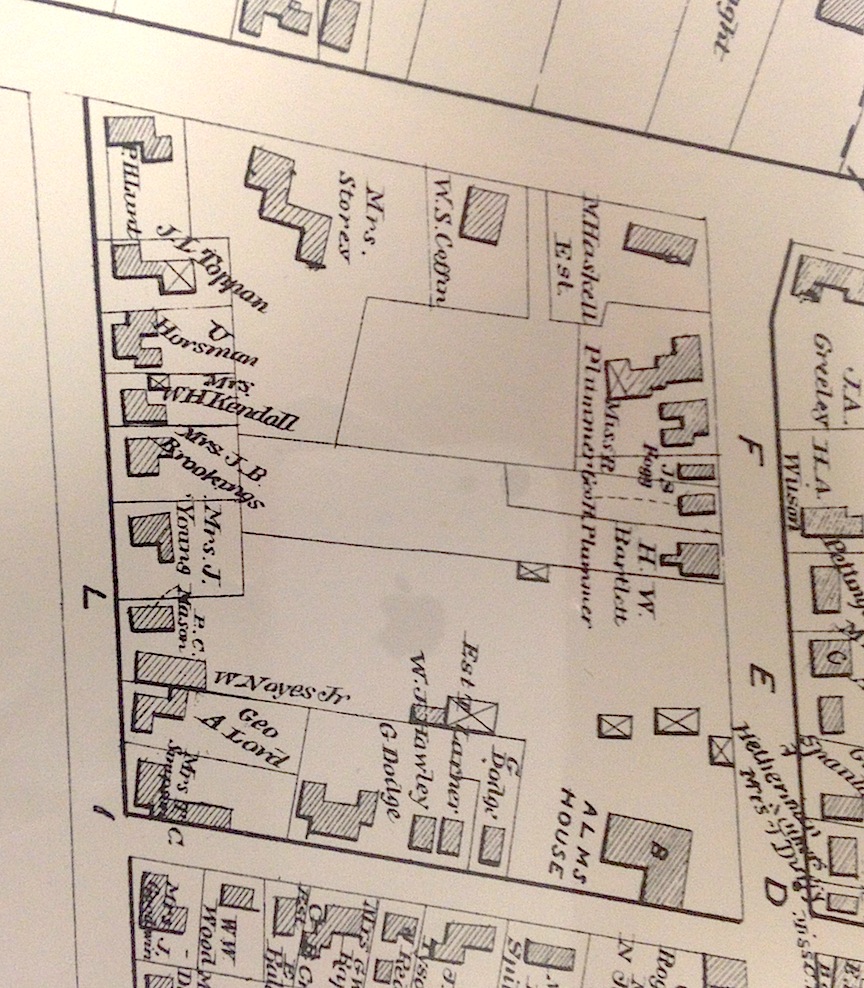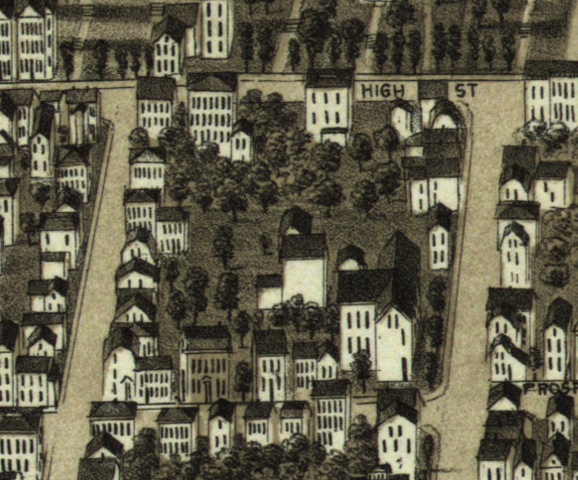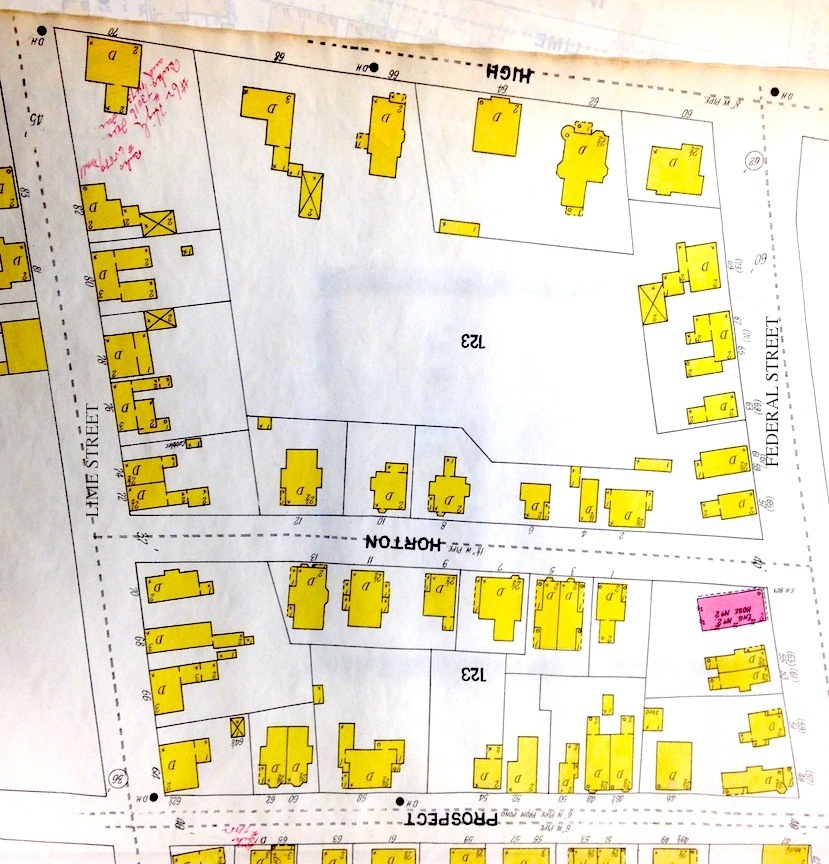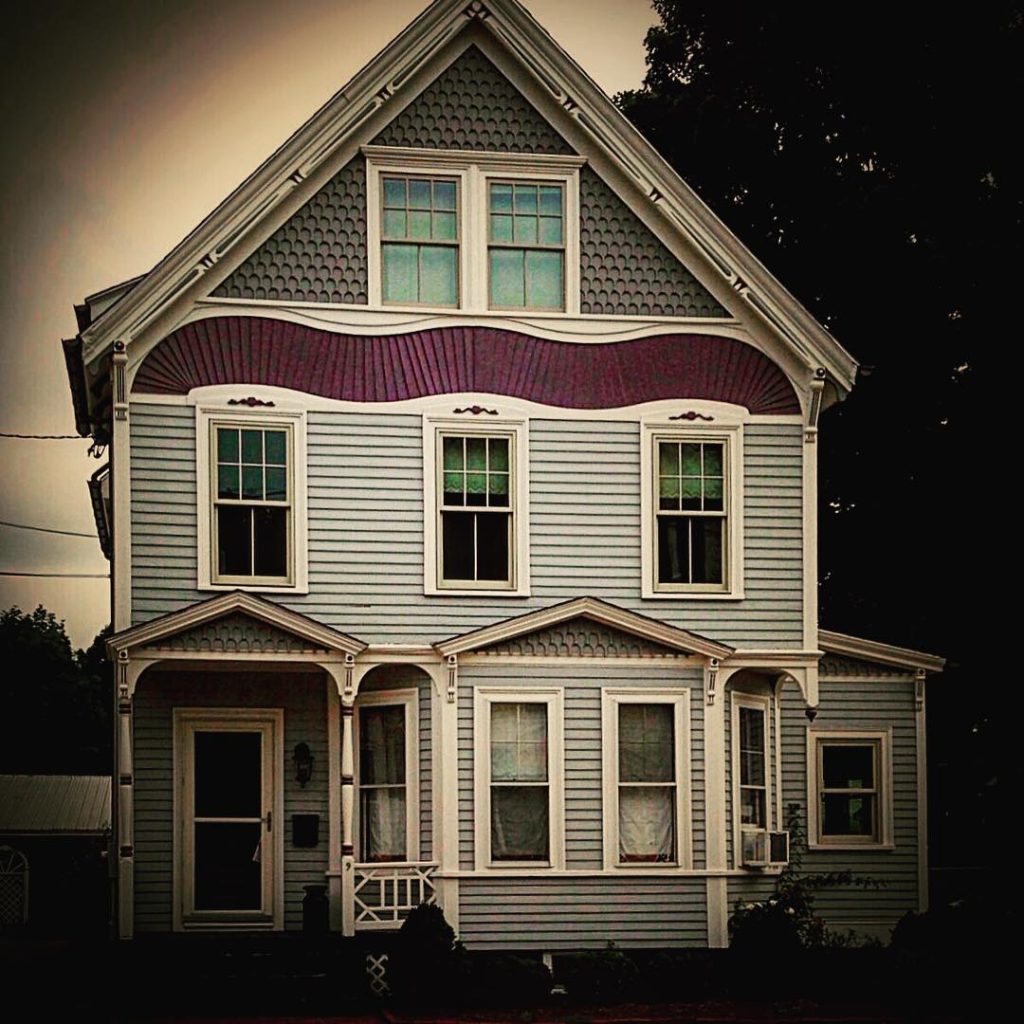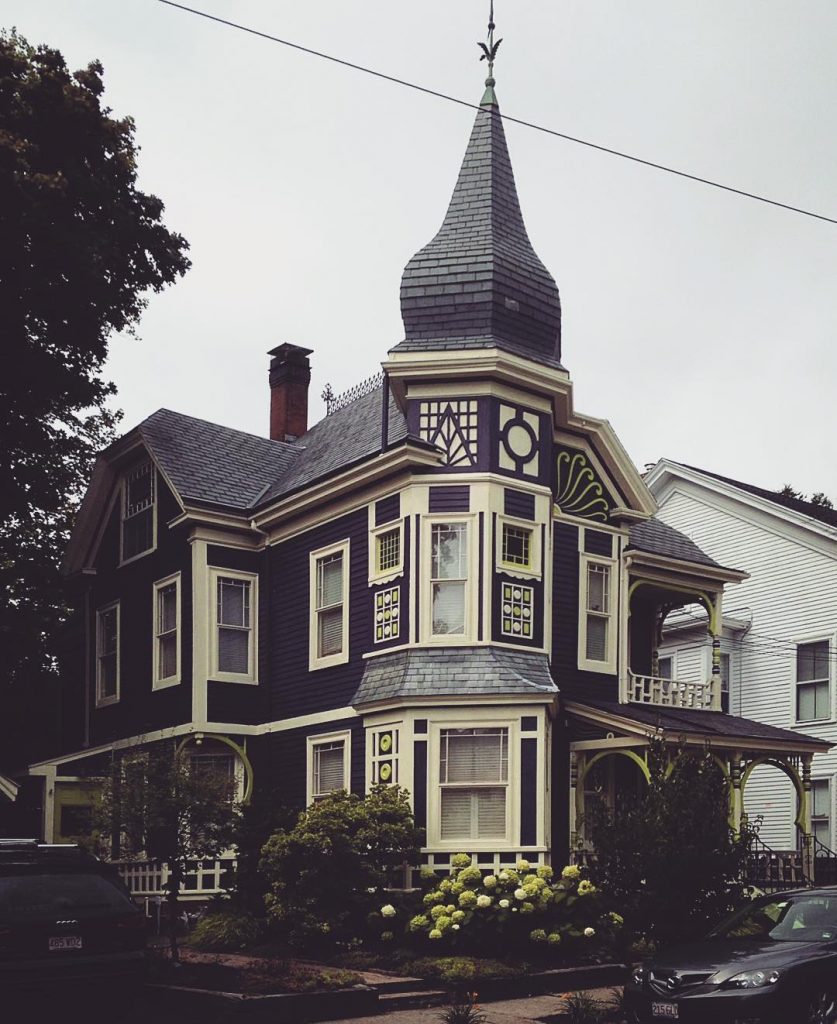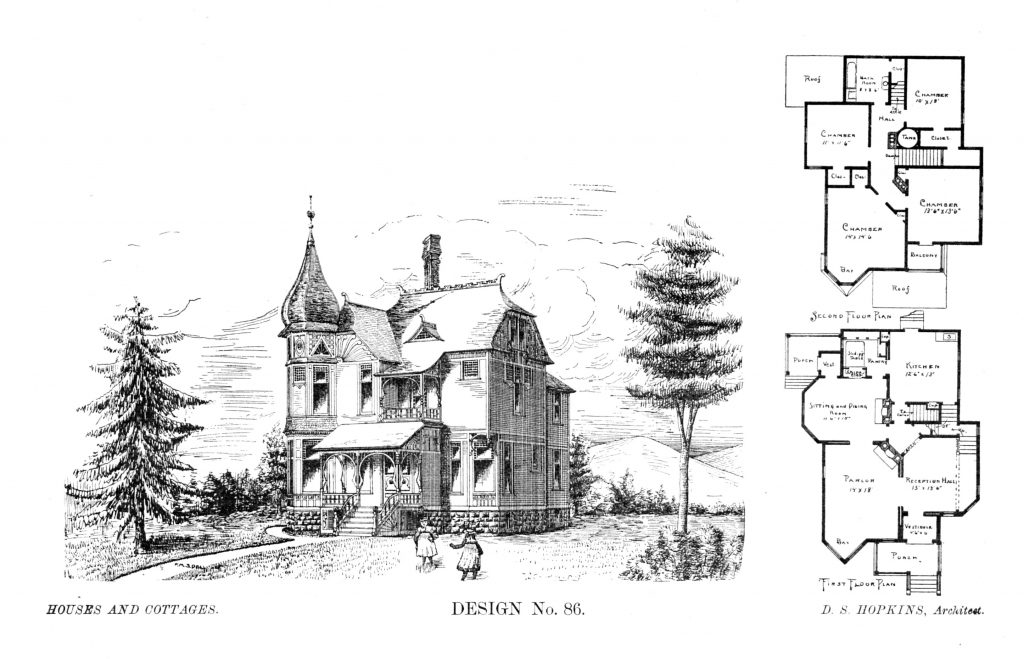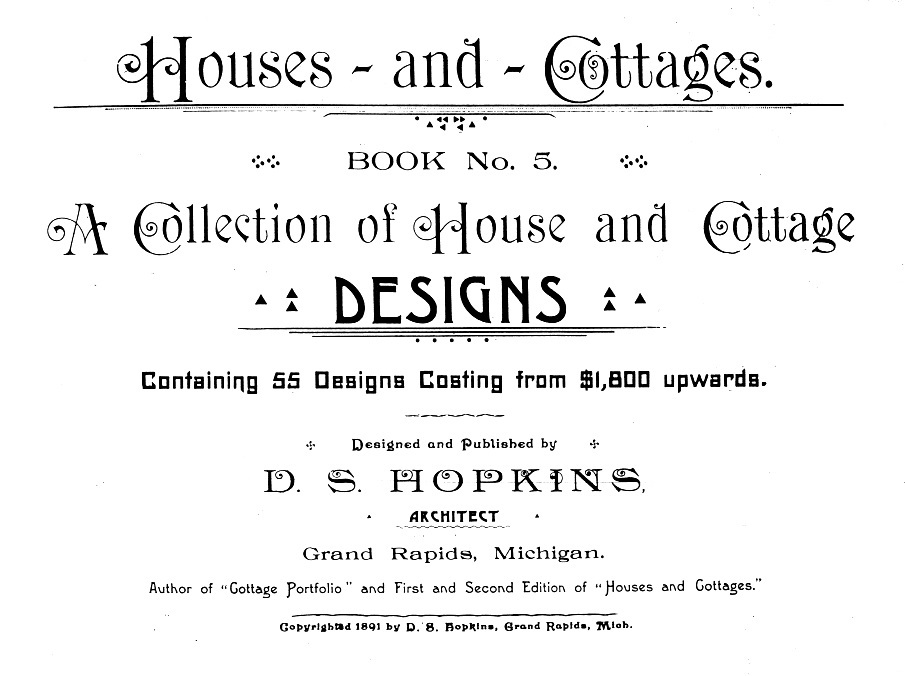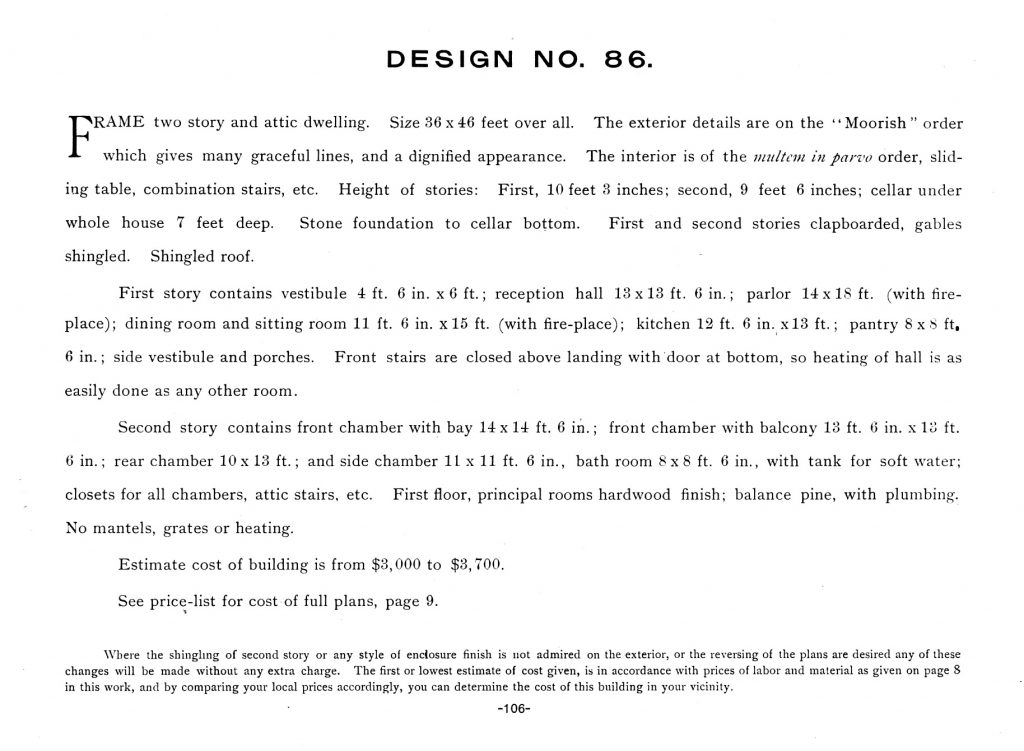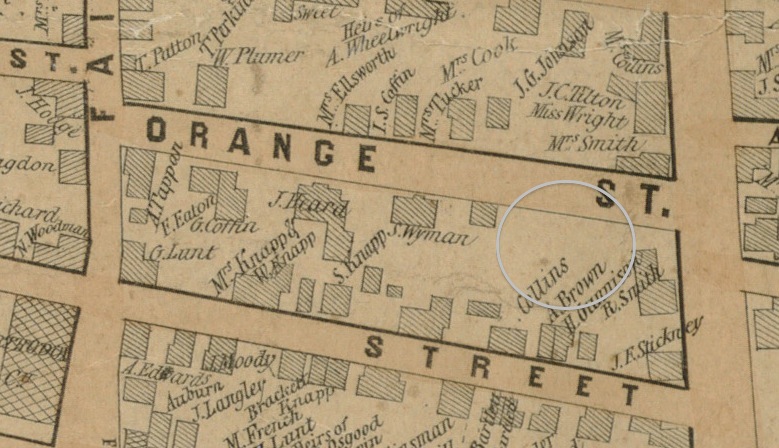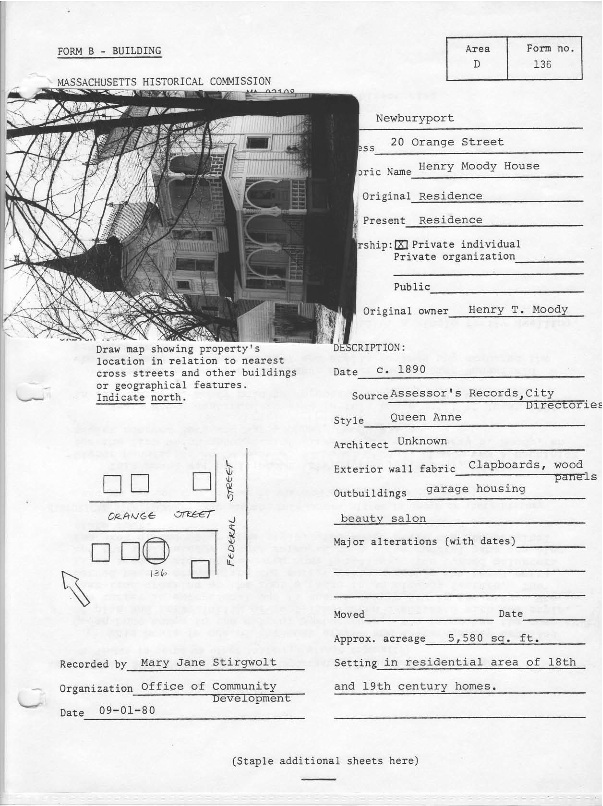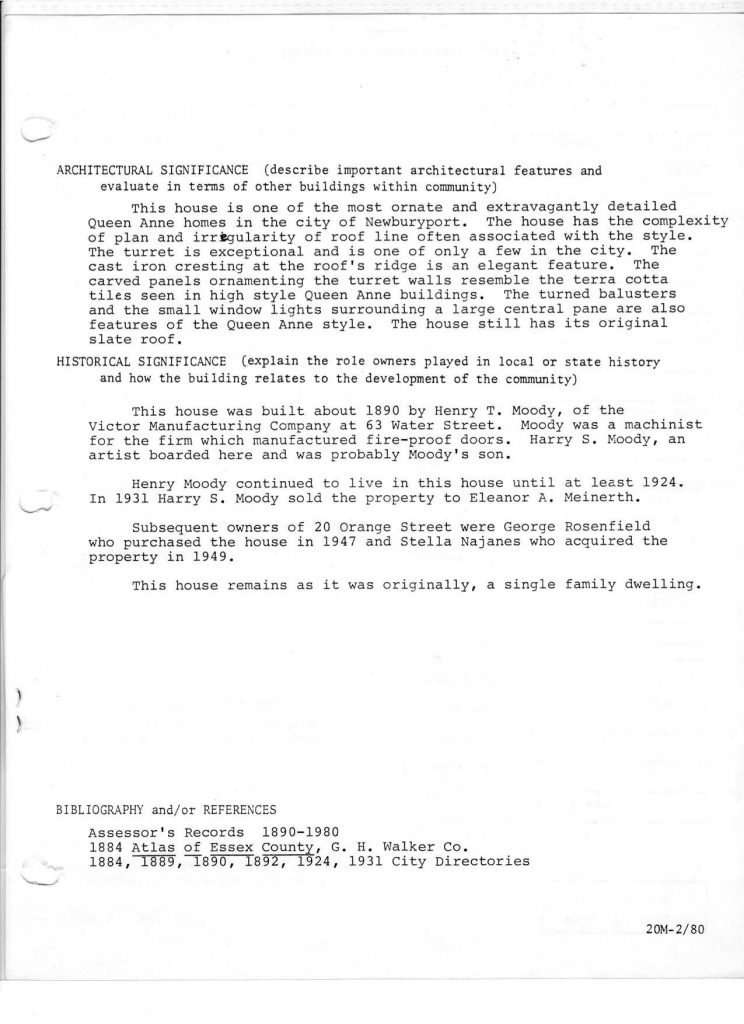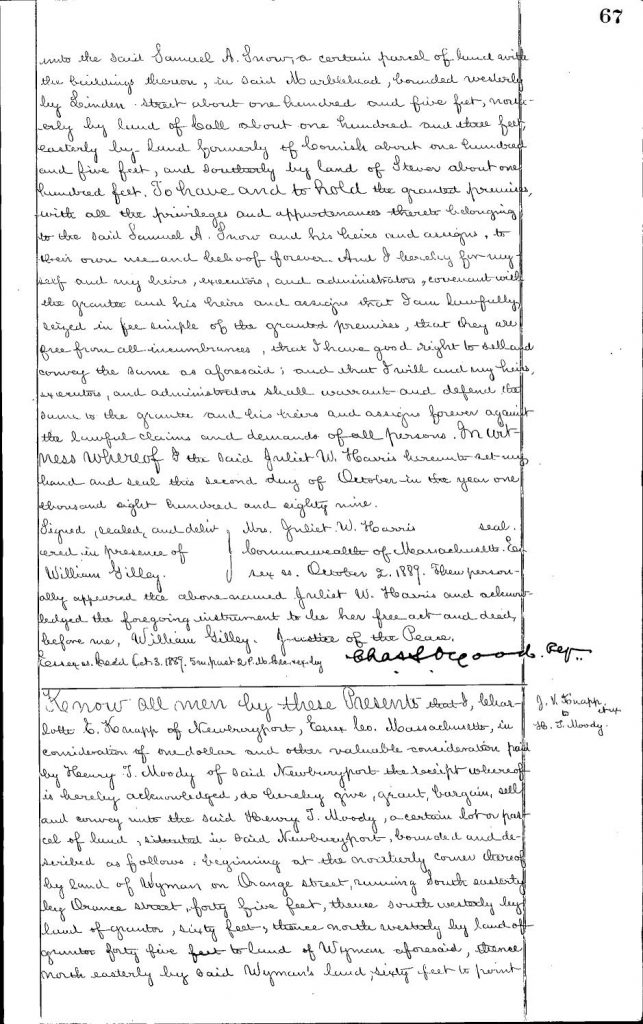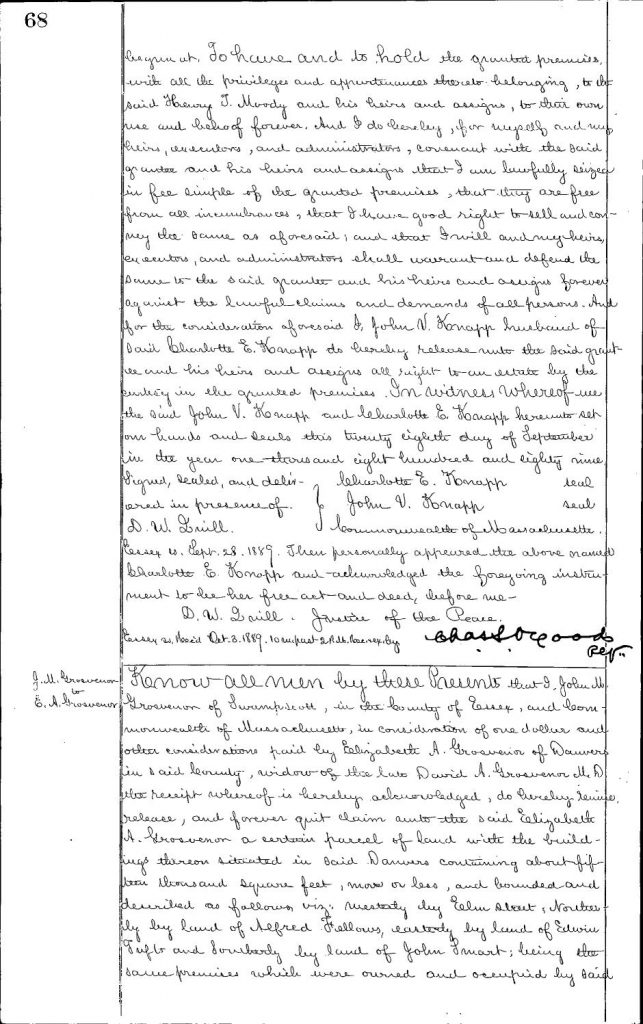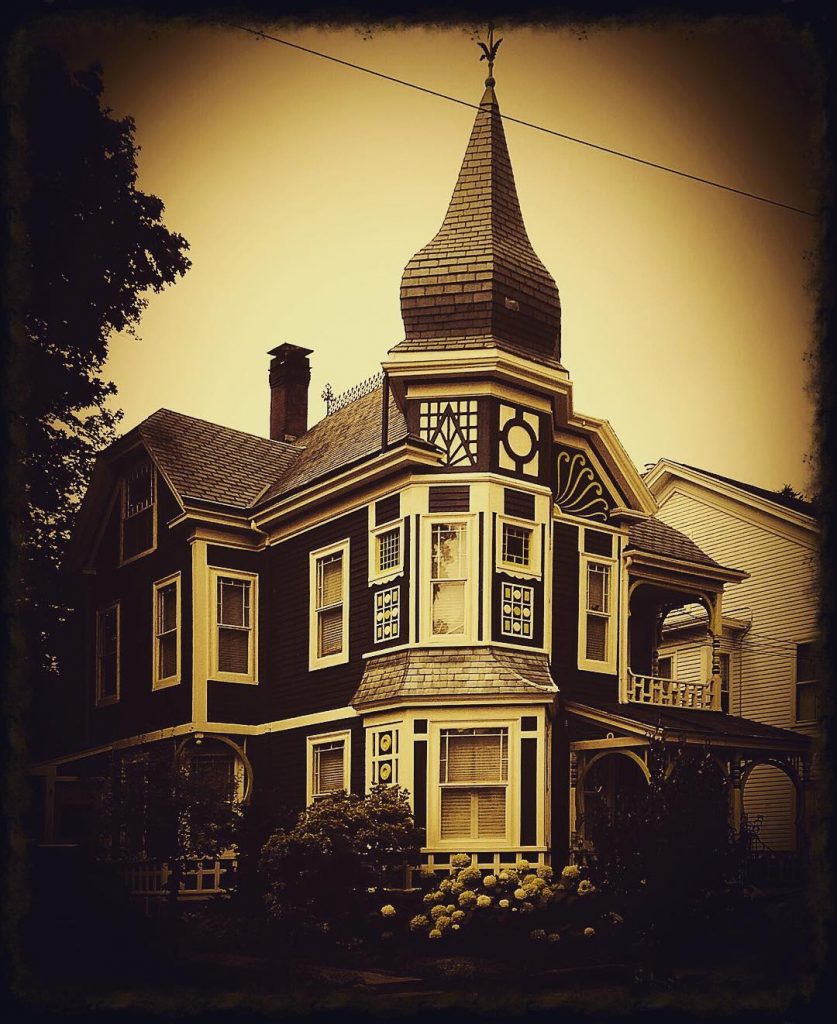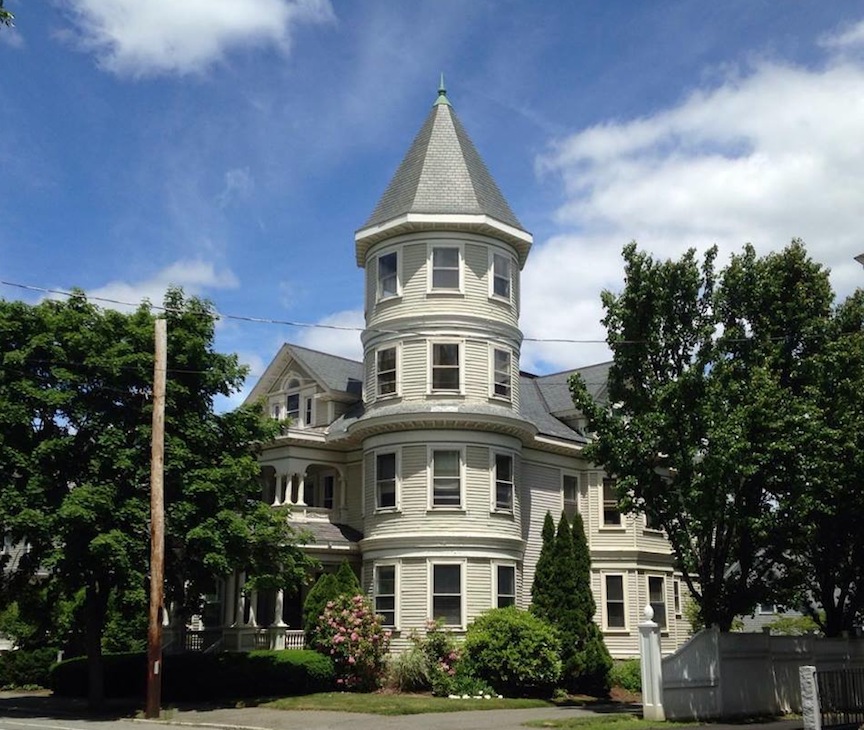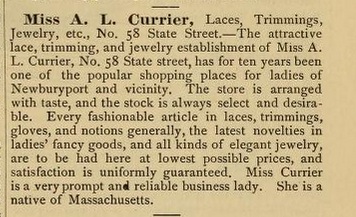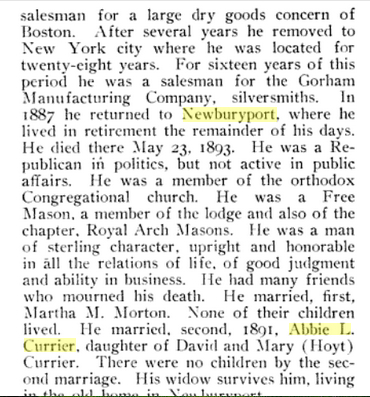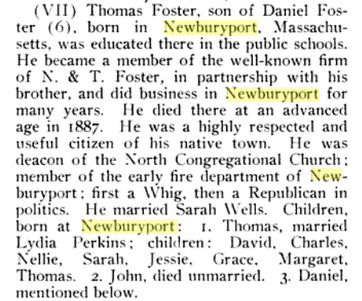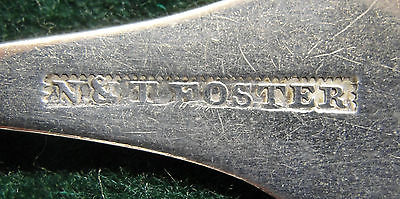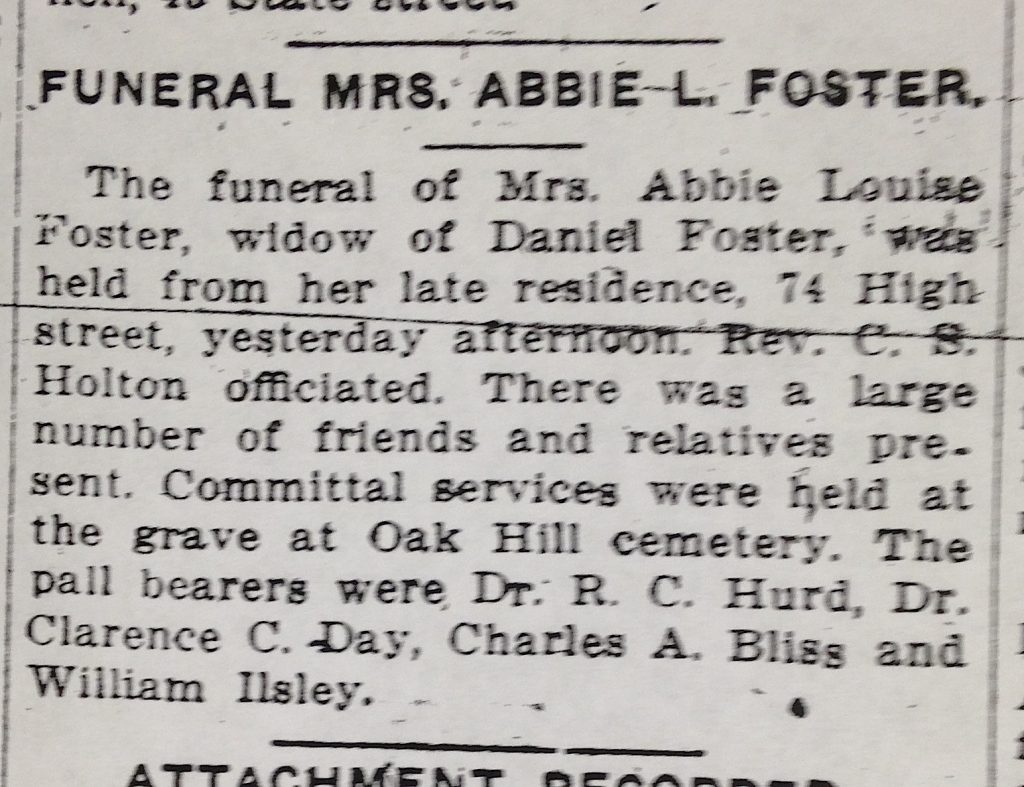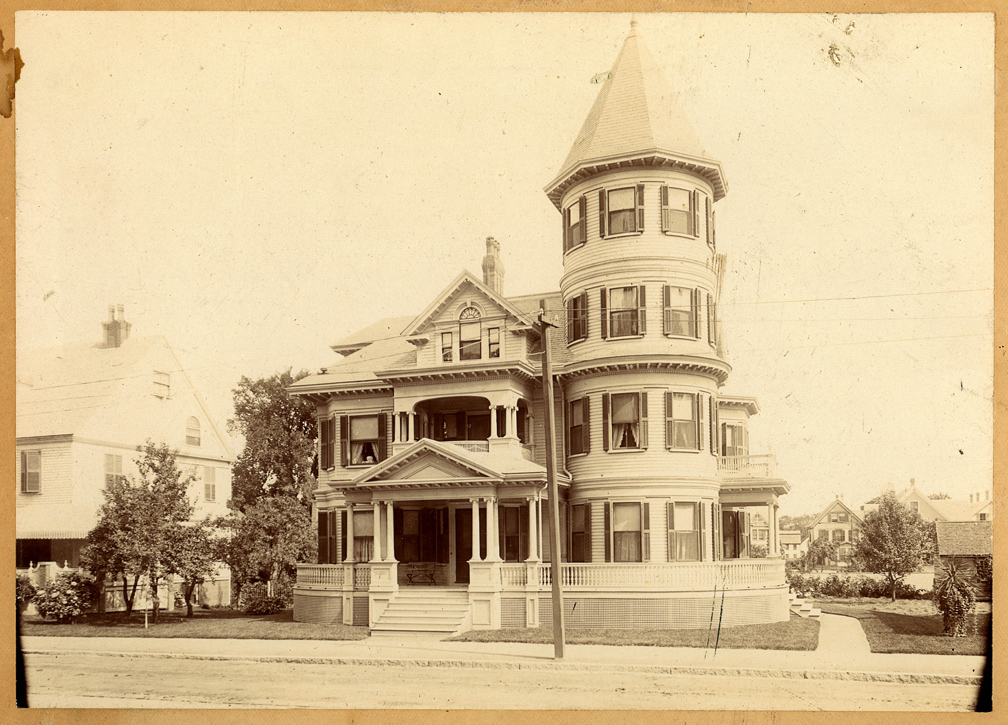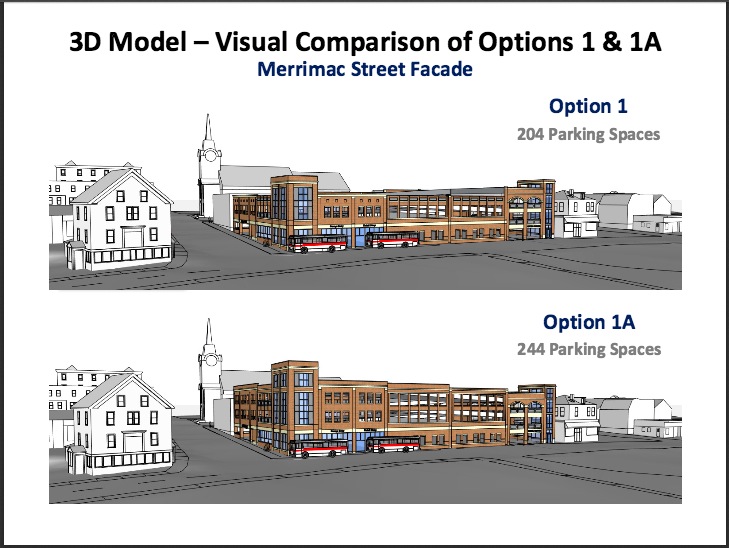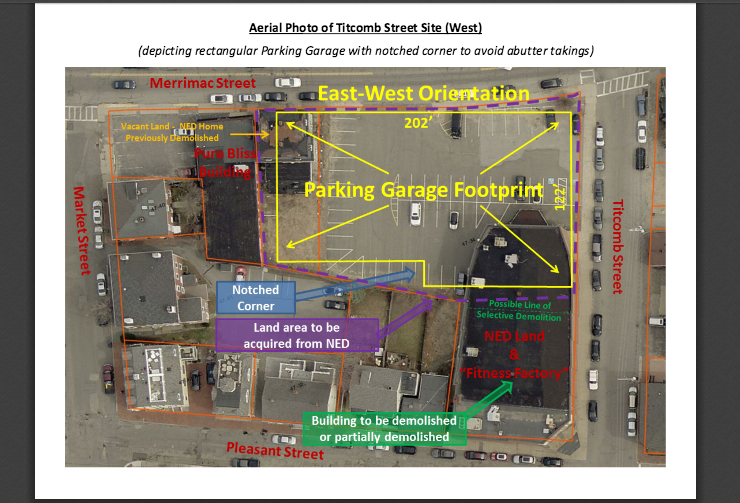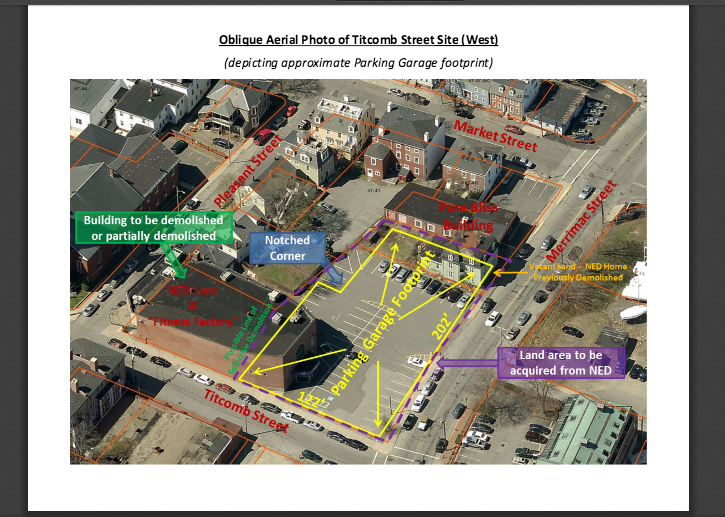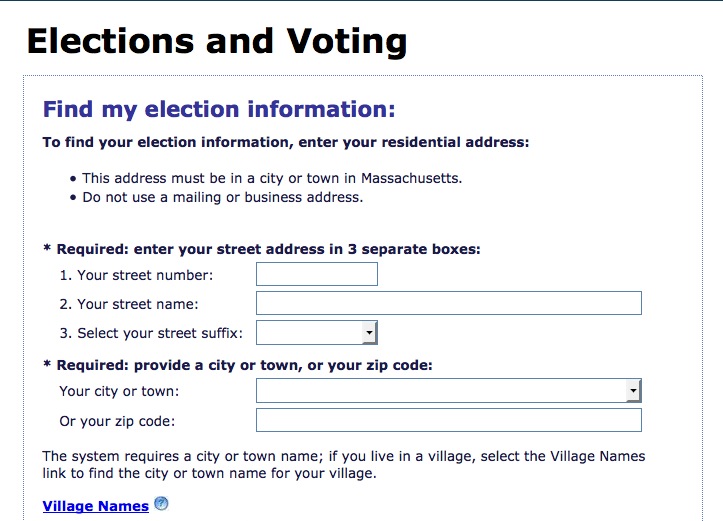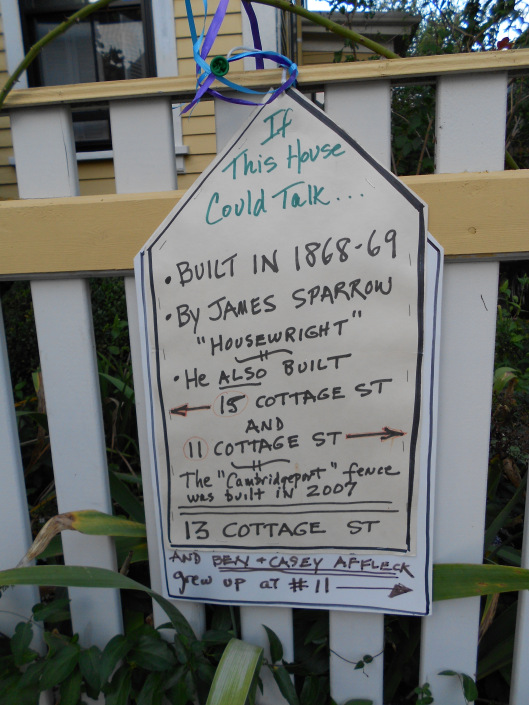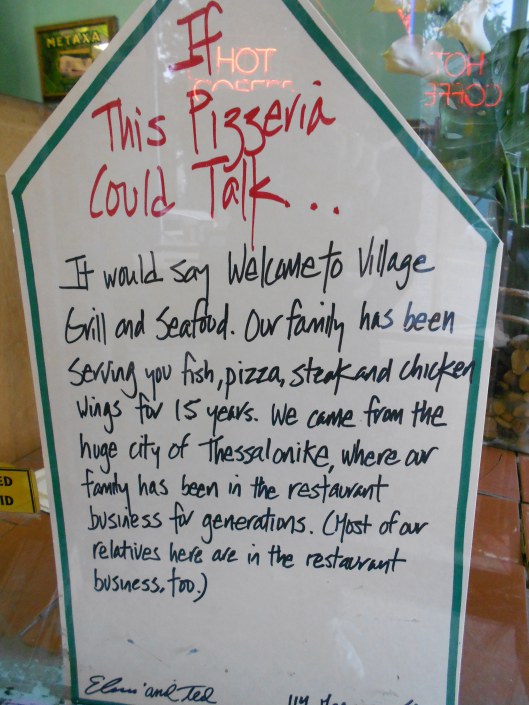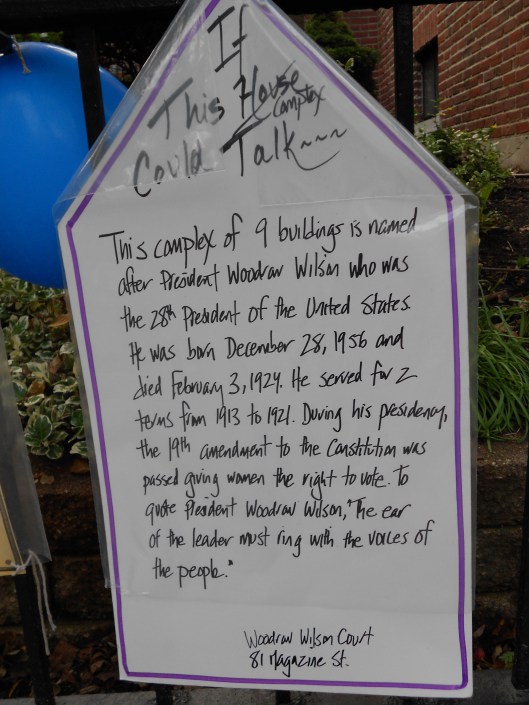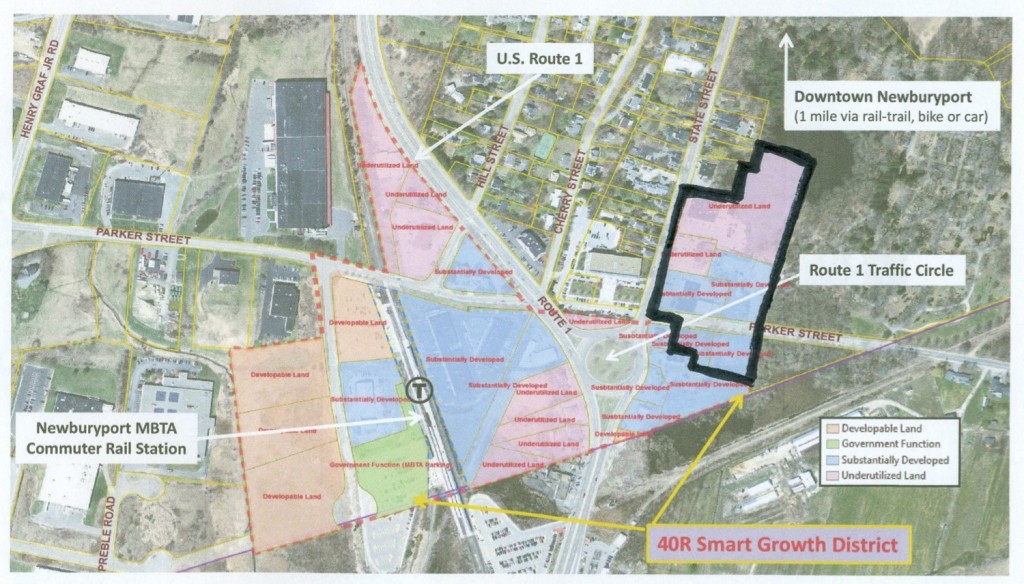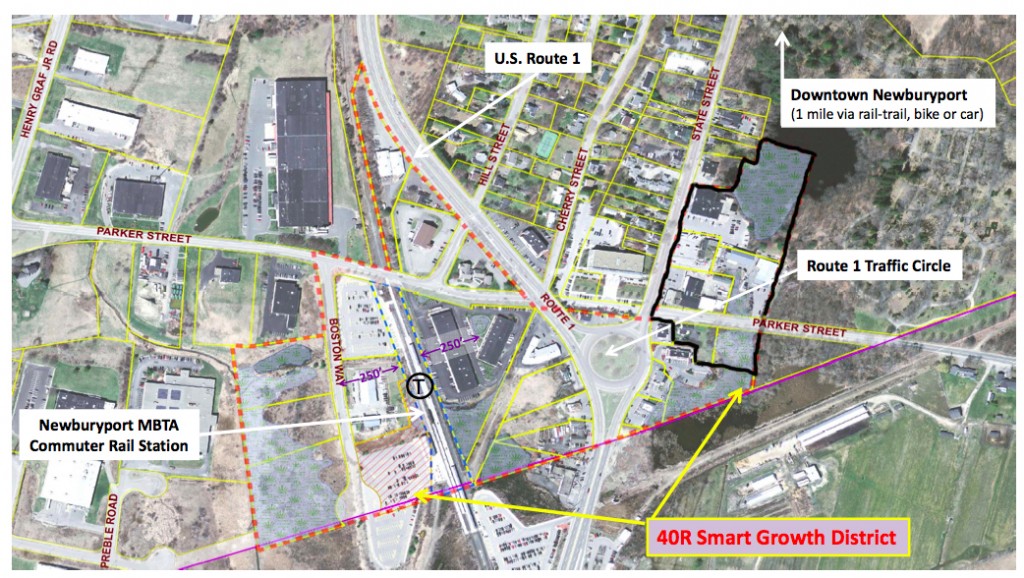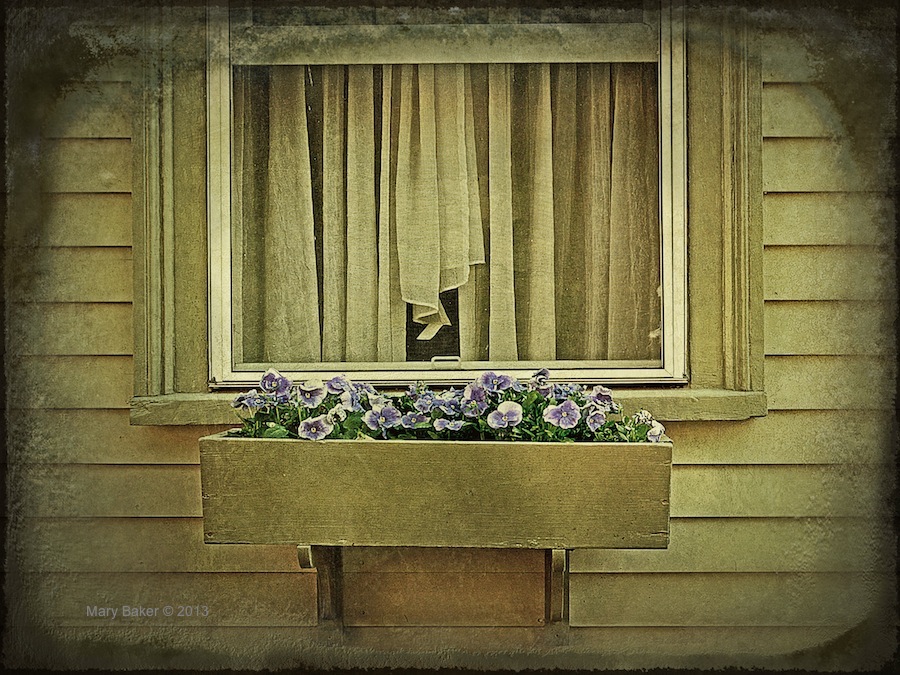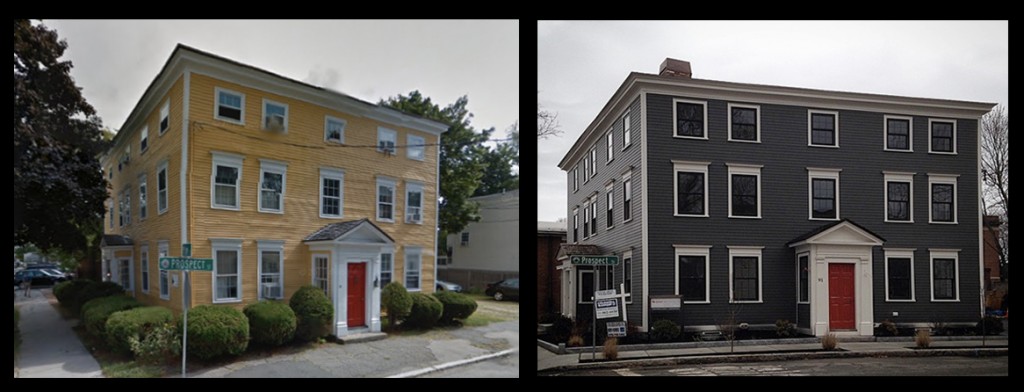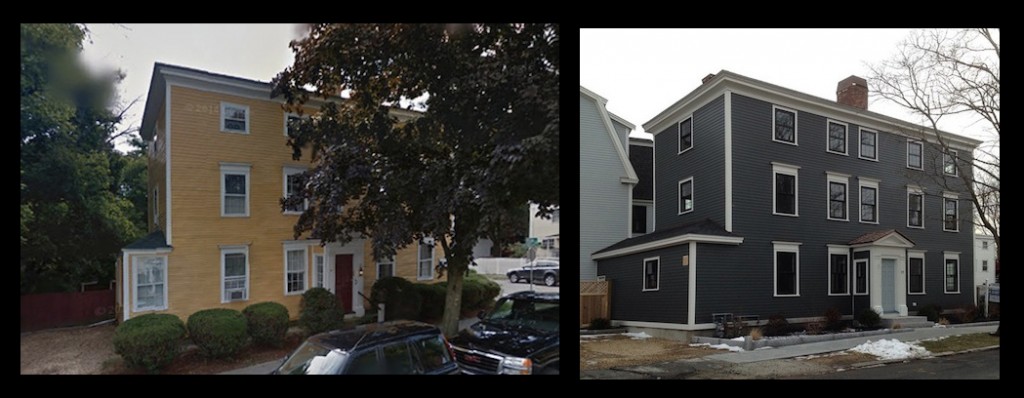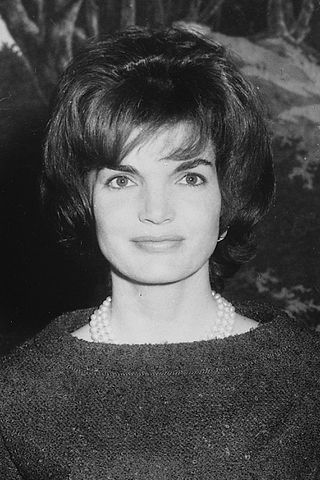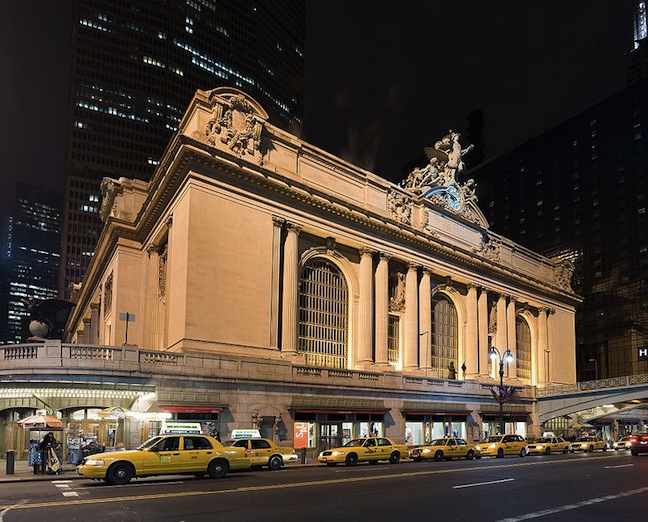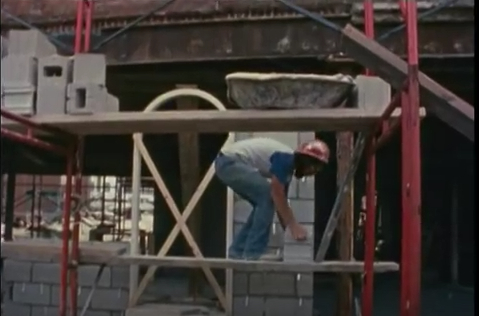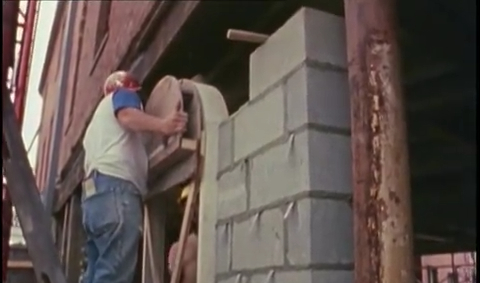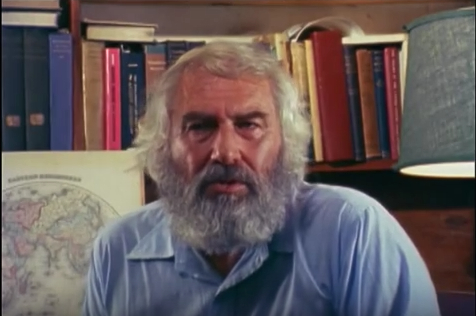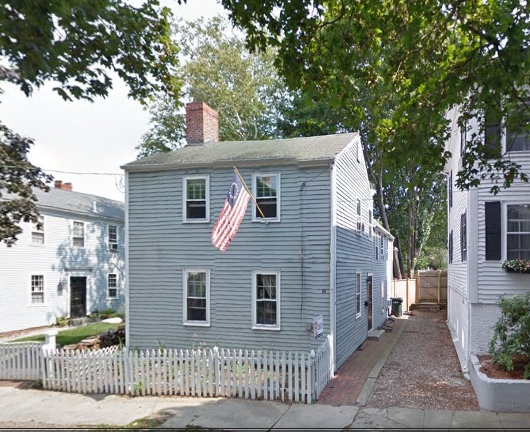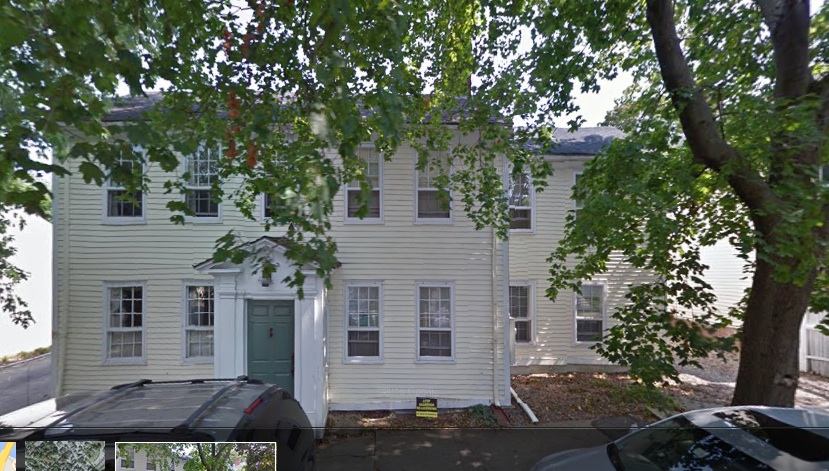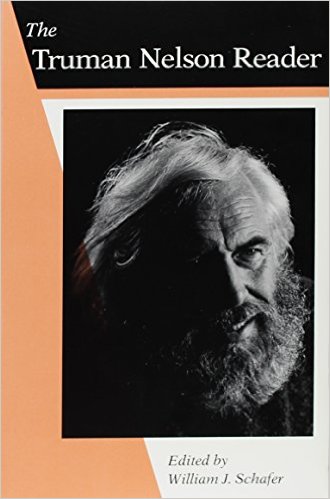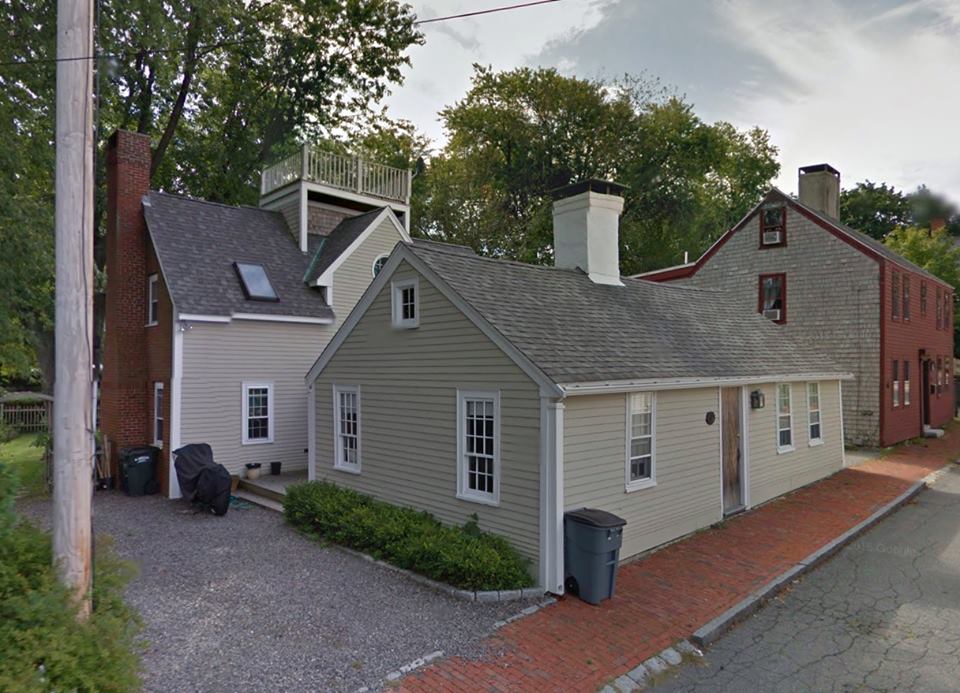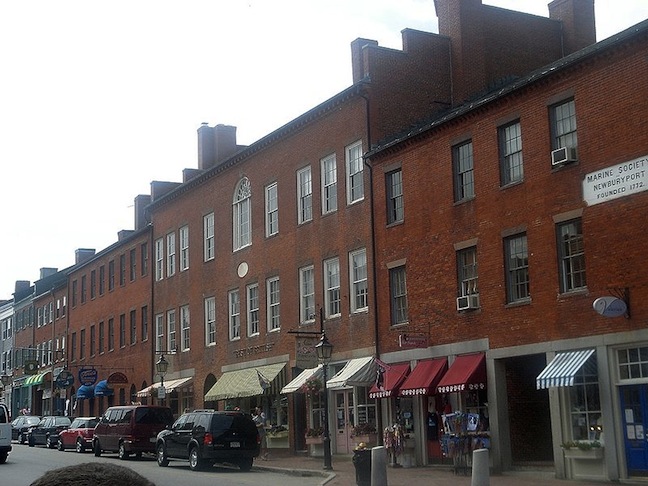When I ended up researching Pond Street, on the 1851 map there are a lot of things on Bartlet Mall which do not exist today, including two schoolhouses. I went on a hunt at the Newburyport Archival Center at the Library and I found a wealth of photos that I had never, ever seen before of Frog Pond and the Bartlet Mall. I never knew that there was one schoolhouse on the Bartlet Mall, much less two.
The photograph at the top of the post shows the school house at the “southerly end” of the Mall, the statue of George Washington in front, and at the left, the center chimney two story house where Stephen Hooper lived (see previous post).
The 1851 map that shows the two schoolhouses and the houses along Frog Pond.
In 1796 the good people of Newburyport voted to build a brick schoolhouse at the “southerly end” of the Mall on land owned by the town near Frog Pond. A second story was added to the schoolhouse in 1809.*
The 1796 Schoolhouse, from the “History of Newburyport Mass: 1764-1905, Volume 1,” by John James Currier
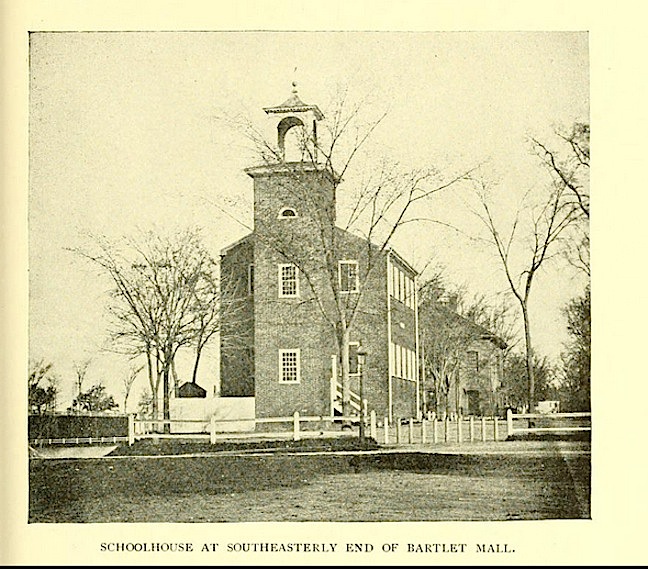
The 1796 Schoolhouse from the “History of Newburyport Mass: 1764-1905, Volume 1,” by John James Currier
The front of the 1796 School house, courtesy of the Archival Center, the Newburyport Public Library.
The back of the 1796 Schoolhouse, courtesy of the Archival Center, the Newburyport Public Library. The Courthouse is in front.
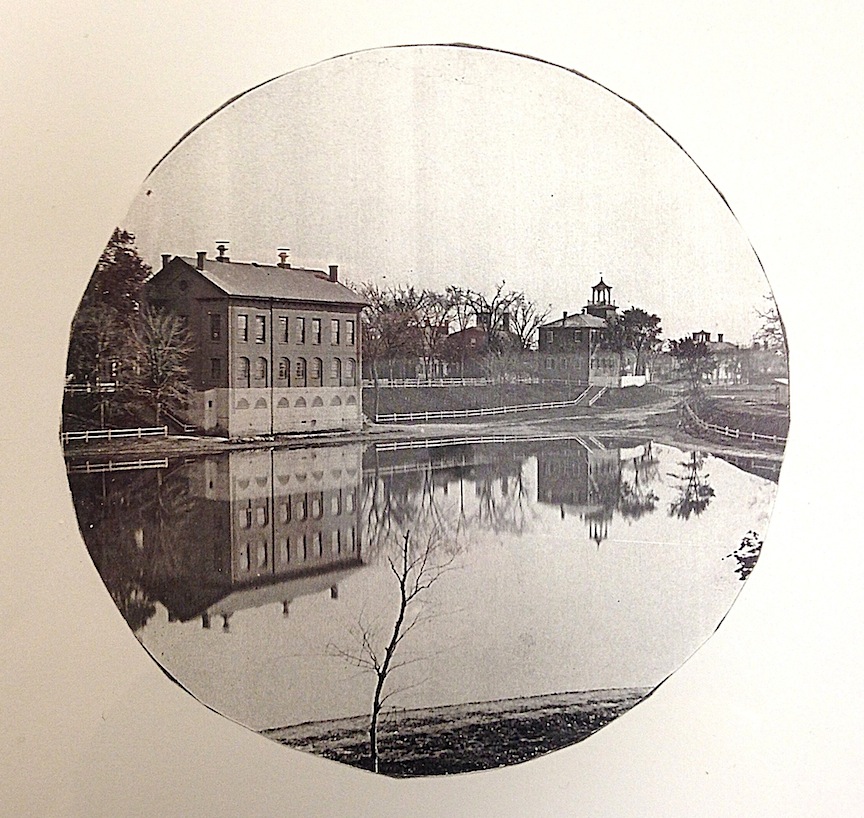
The back of the 1796 School house, Frog Pond and the Courthouse courtesy of the Archival Center, the Newburyport Public Library.
And in 1823 a new brick school building was built on the northwesterly side of the Mall.*
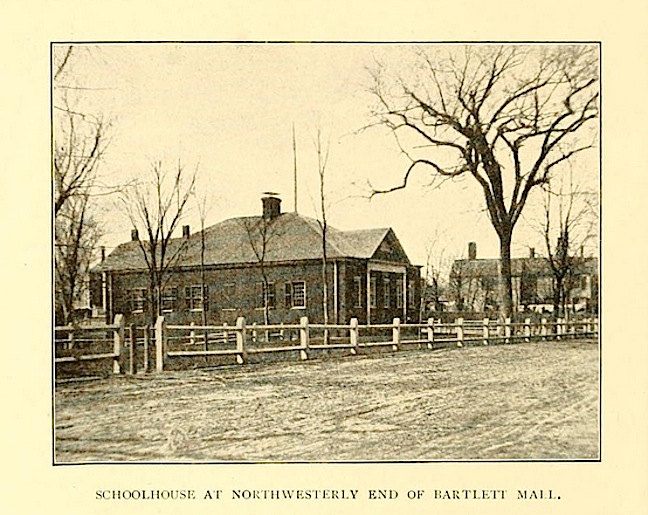
The 1823 Schoolhouse, from the “History of Newburyport Mass: 1764-1905, Volume 1,” by John James Currier
The windmill (that can been seen on the 1771 survey of Frog Pond) was moved near the burying ground in 1774, when the hill was cut down as a training field.*
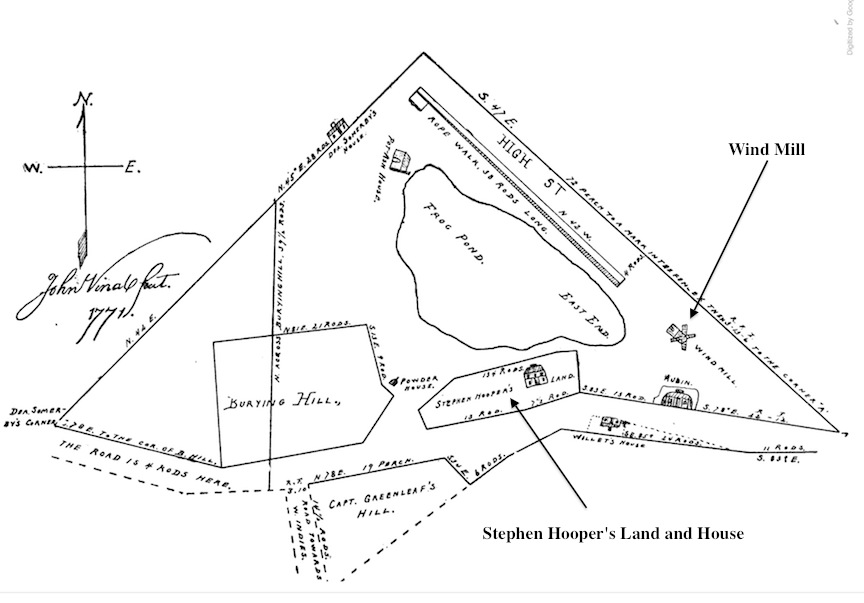
The 1771 survey of Frog Pond from “History of Newburyport Mass: 1764-1905, Volume 1,” by John James Currier
.
The statue of George Washington was given to the city in 1878 by Daniel I. Tenney, a Newburyport jeweler and silversmith, with a rededication ceremony in 1879 on George Washington’s birthday.*
In 1868 the one-story school house was destroyed by a fire. And in1883 the two-story brick schoolhouse was sold at auction and taken down the following summer. And in 1882, the house owned by Stephen Hooper (see previous post) was sold and removed.*
State and High Street with Pond Street on the left.
This is a detail of a photograph from the Archival Center at the Newburyport Library taken from State Street that shows High Street on the right and Pond Street on the left. The streets look like they are possibly dirt or gravel and not paved the way that the roads are today. The statue of George Washington and the schoolhouse are in the center.
I look at the two story schoolhouse in back of the George Washington statue and think how much we would value that building today. It breaks my heart that it was removed because I love, love, love it, and I wonder how many different ways we could think to re-purposed that beautiful building in this particular moment in time.
The houses on Frog Pond, courtesy of the Archival Center at the Newburyport Public Library.
And here are the houses that were on Frog Pond (for more detail see previous post). A lot of people, including me, wondered about the houses behind the ones on Frog Pond that were eventually taken down. And they still exist – 17 Pond Street, 19-21 Pond Street and 23 Pond Street which today, if you are standing in front of CVS are to the right towards Low Street.
17 Pond Street, 19-21 Pond Street and 23 Pond Street today.
*”History of Newburyport Mass: 1764-1905, Volume 1,” by John James Currier
